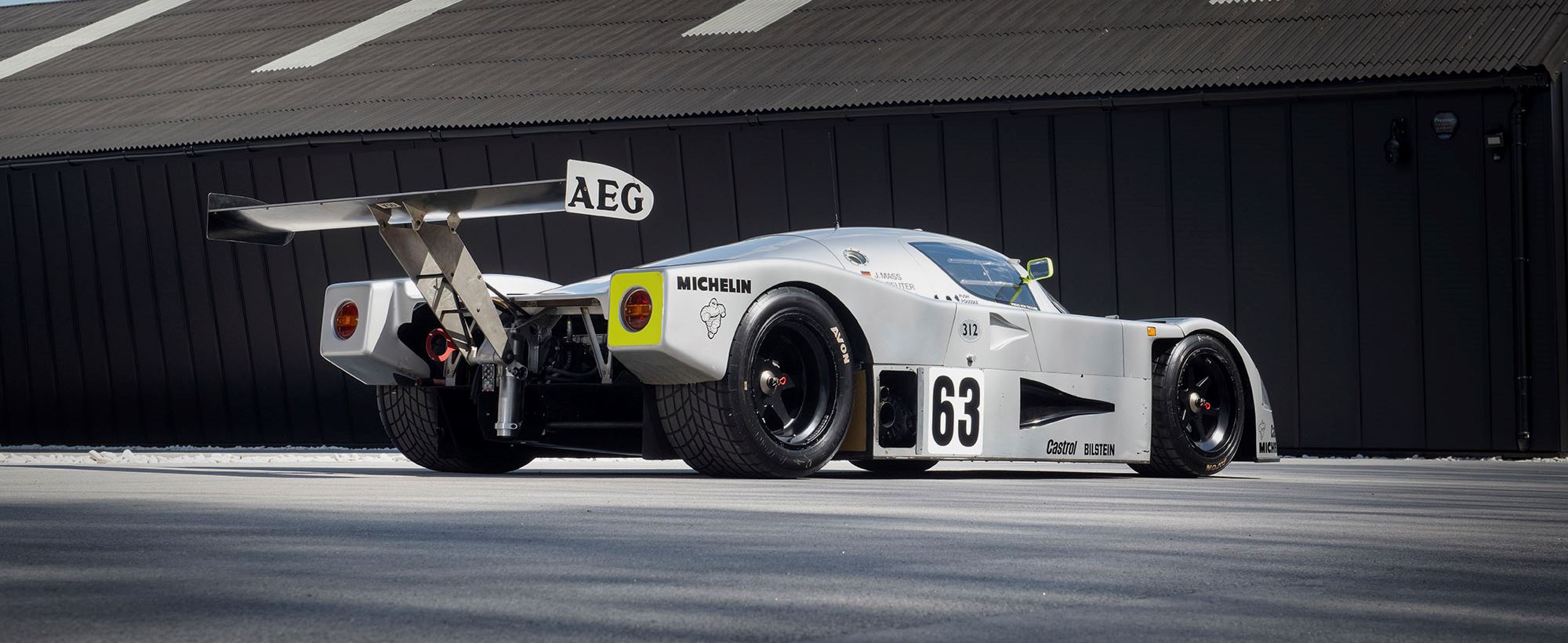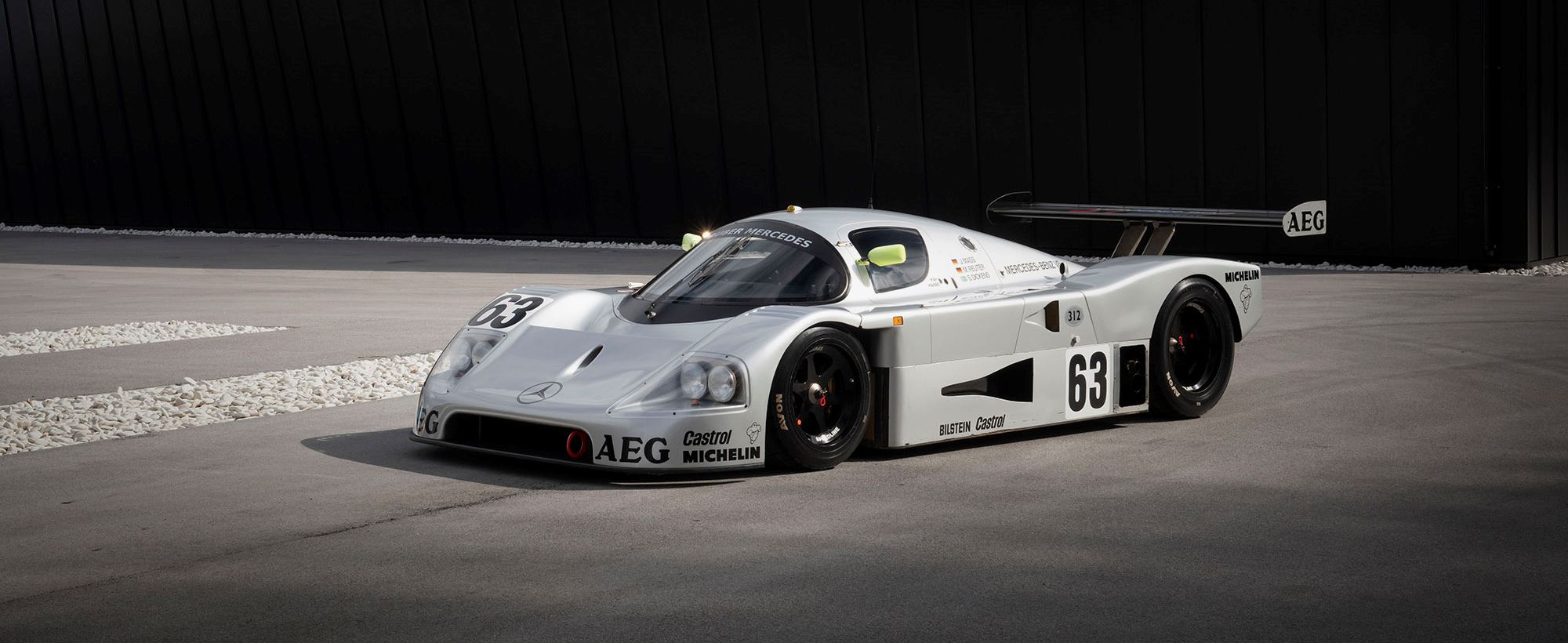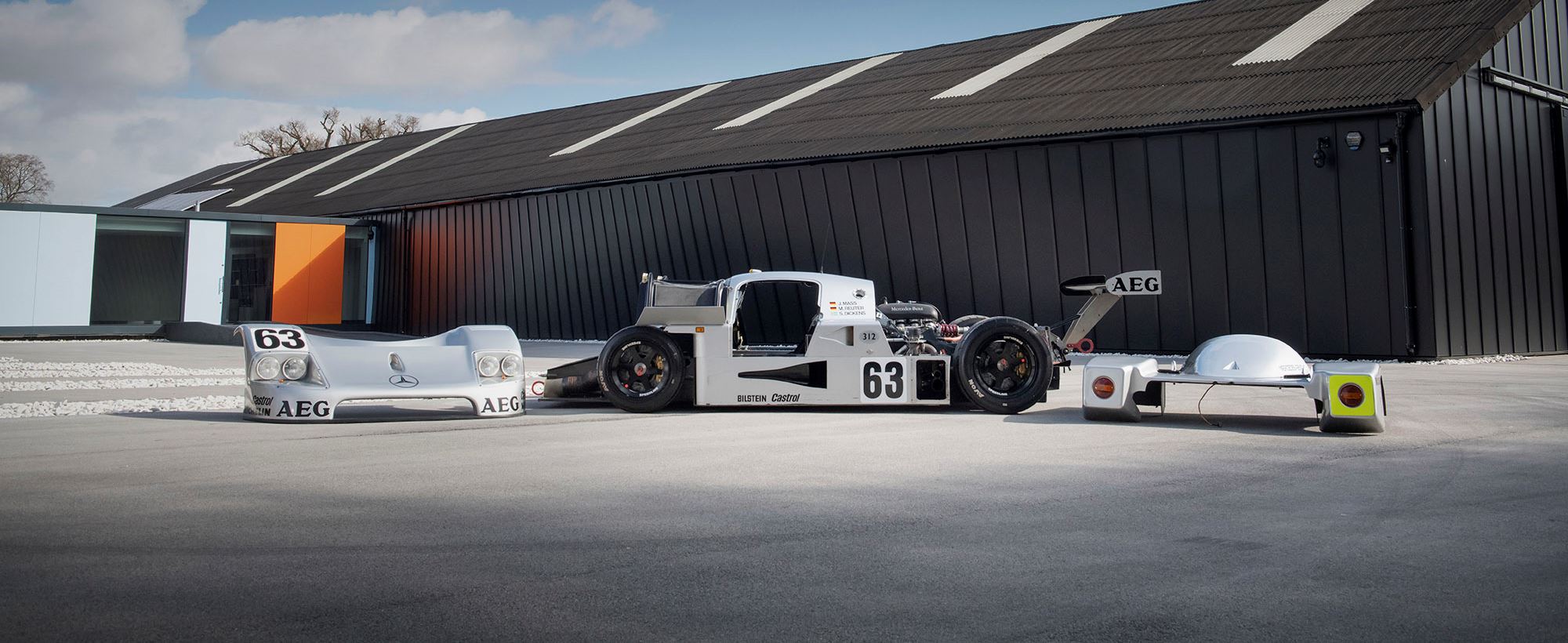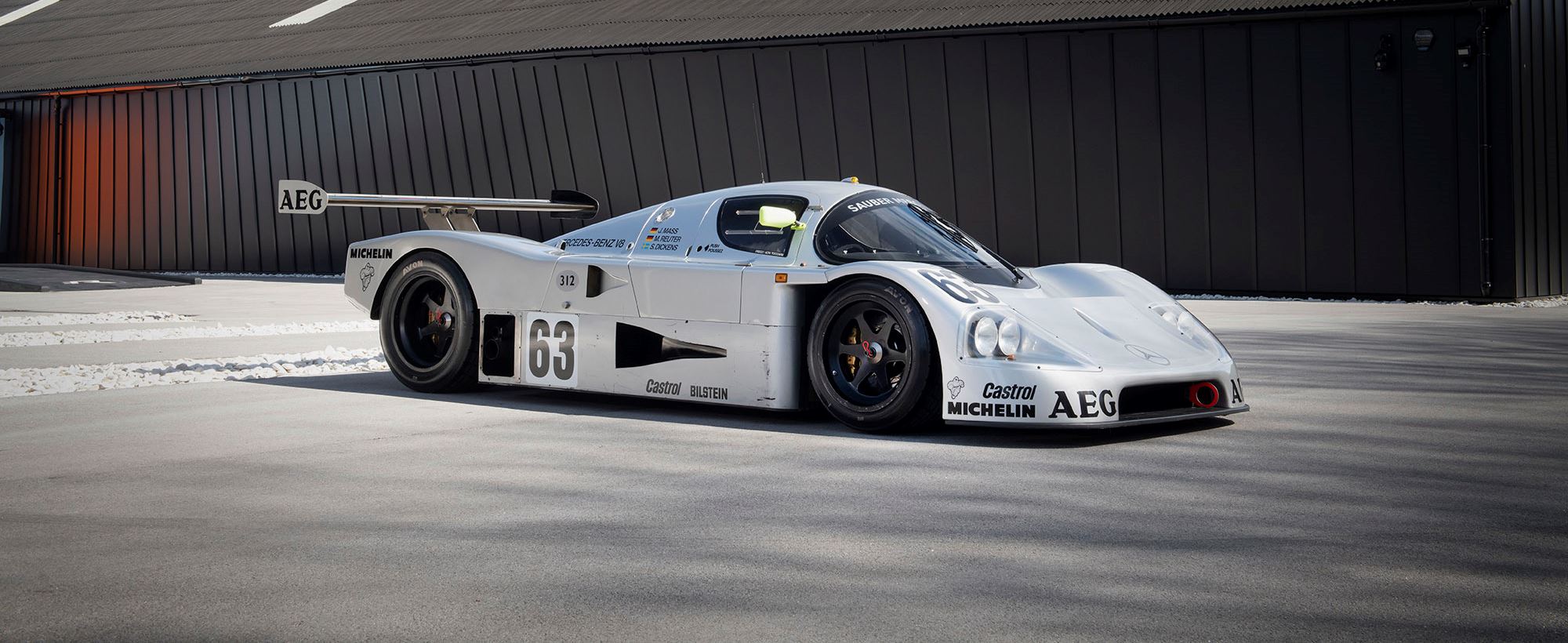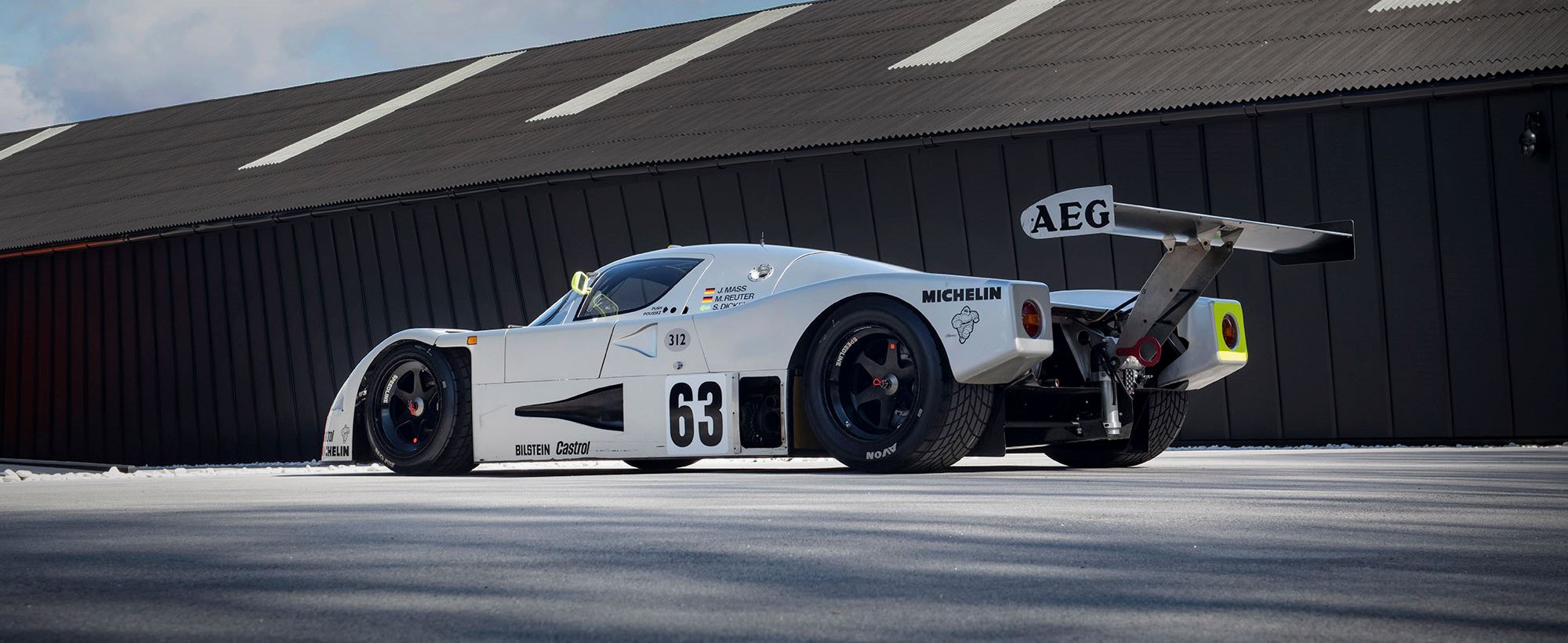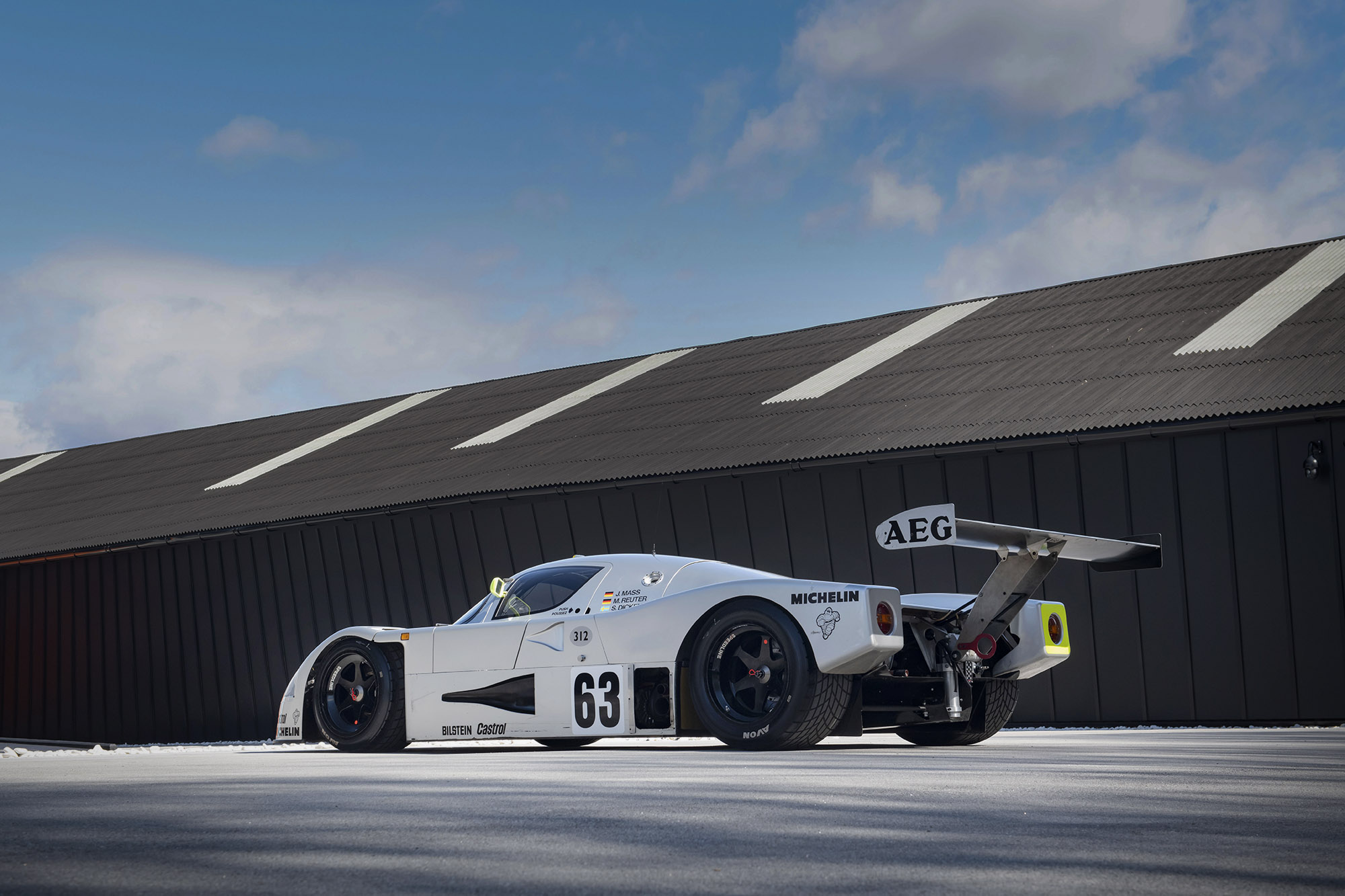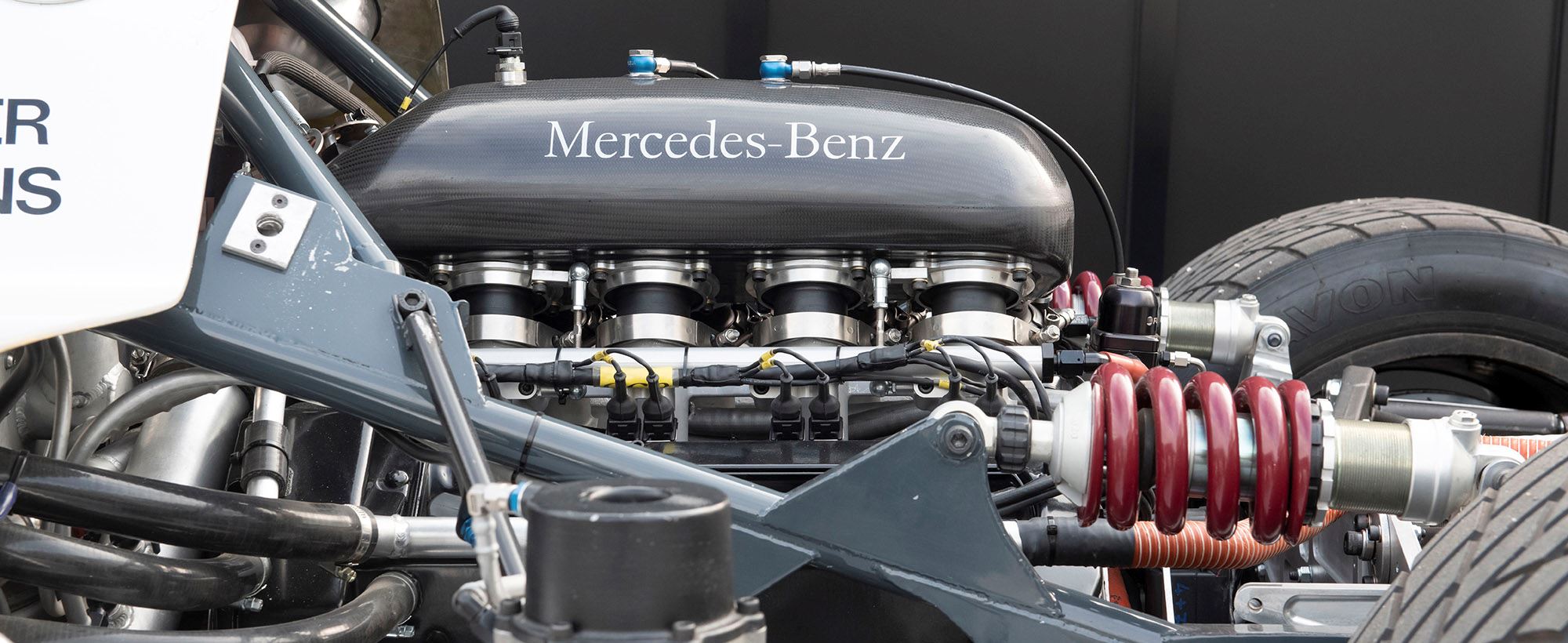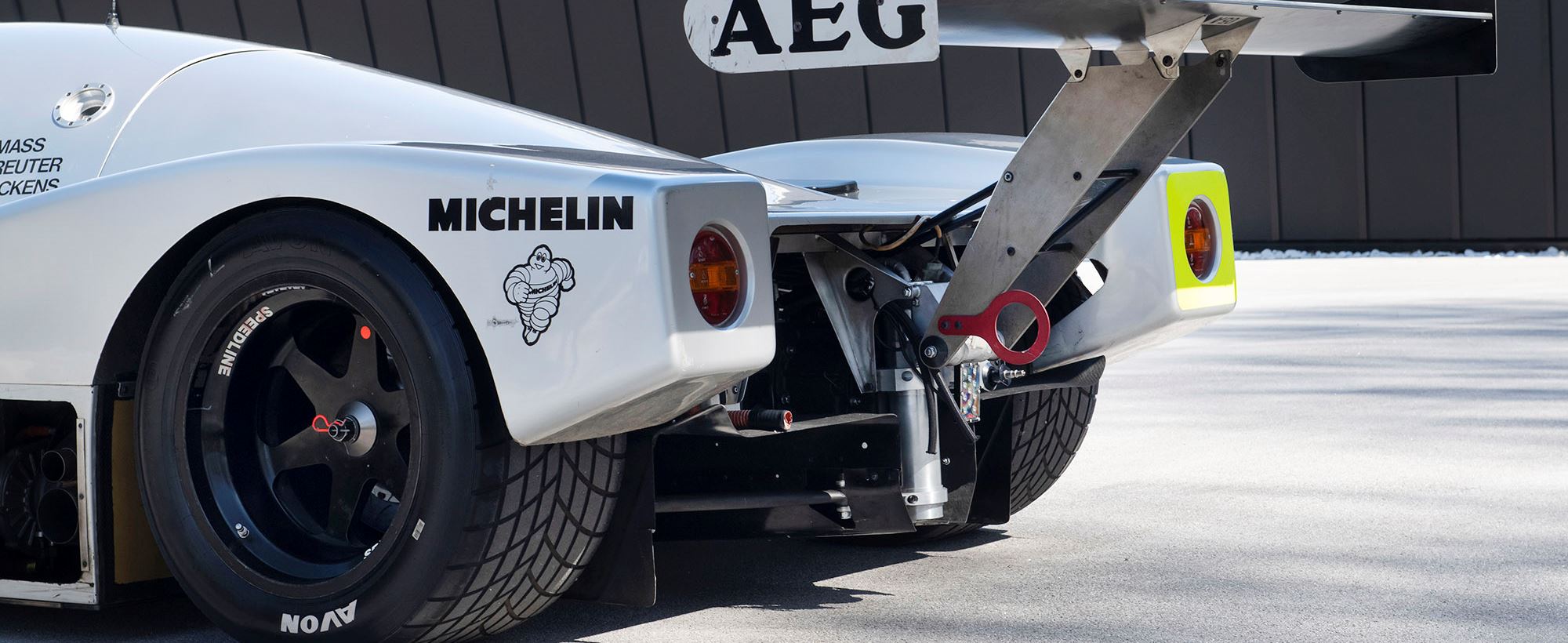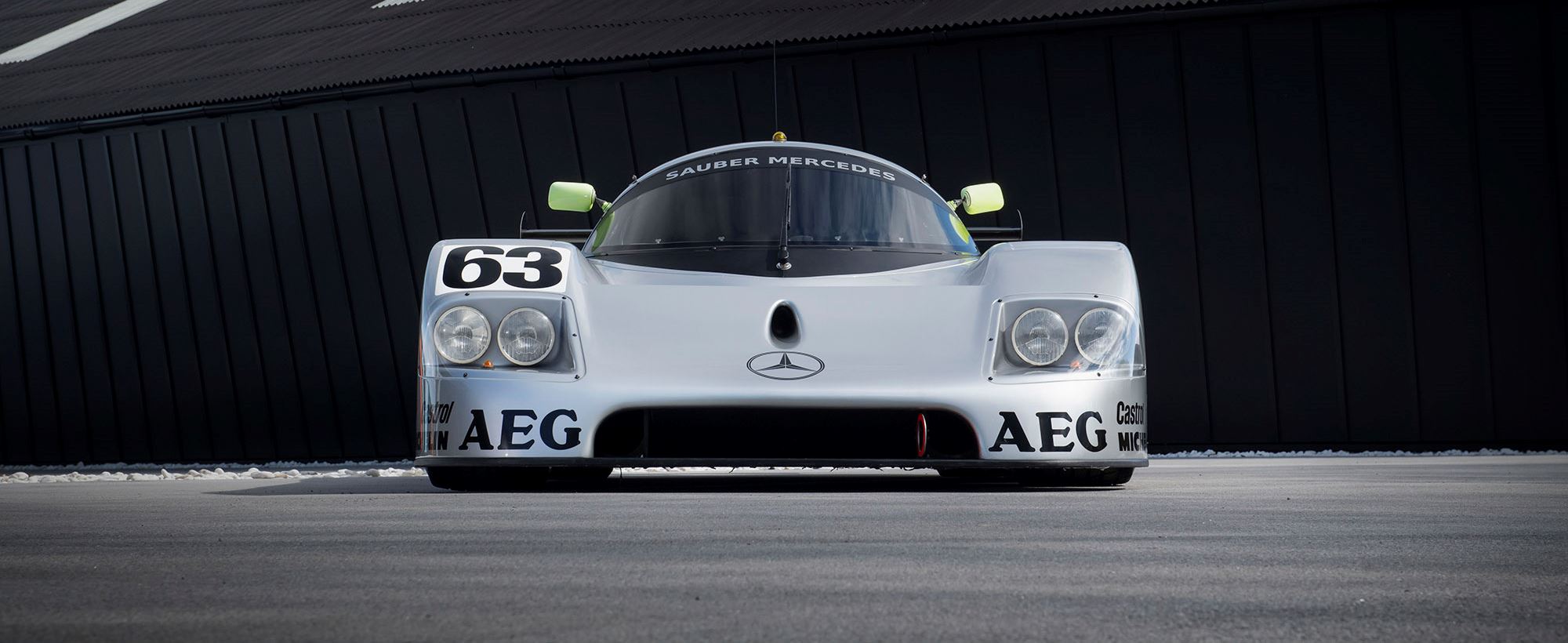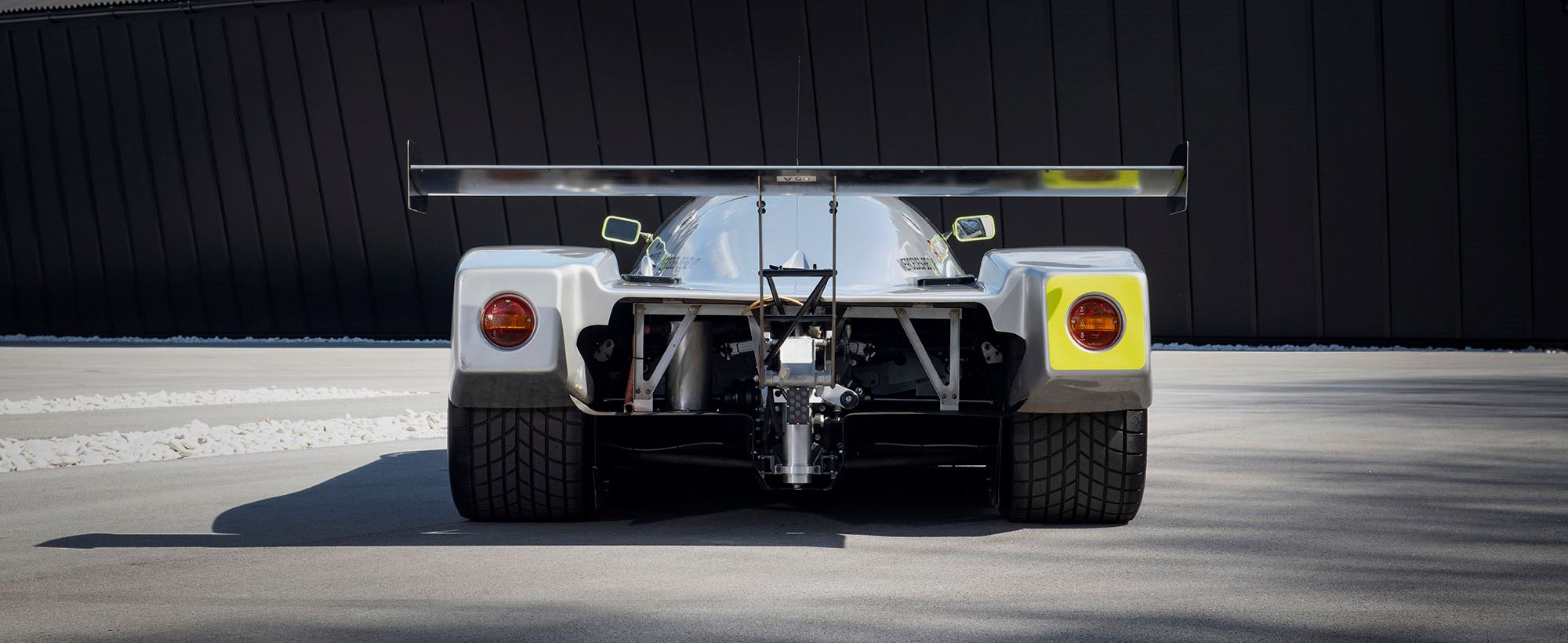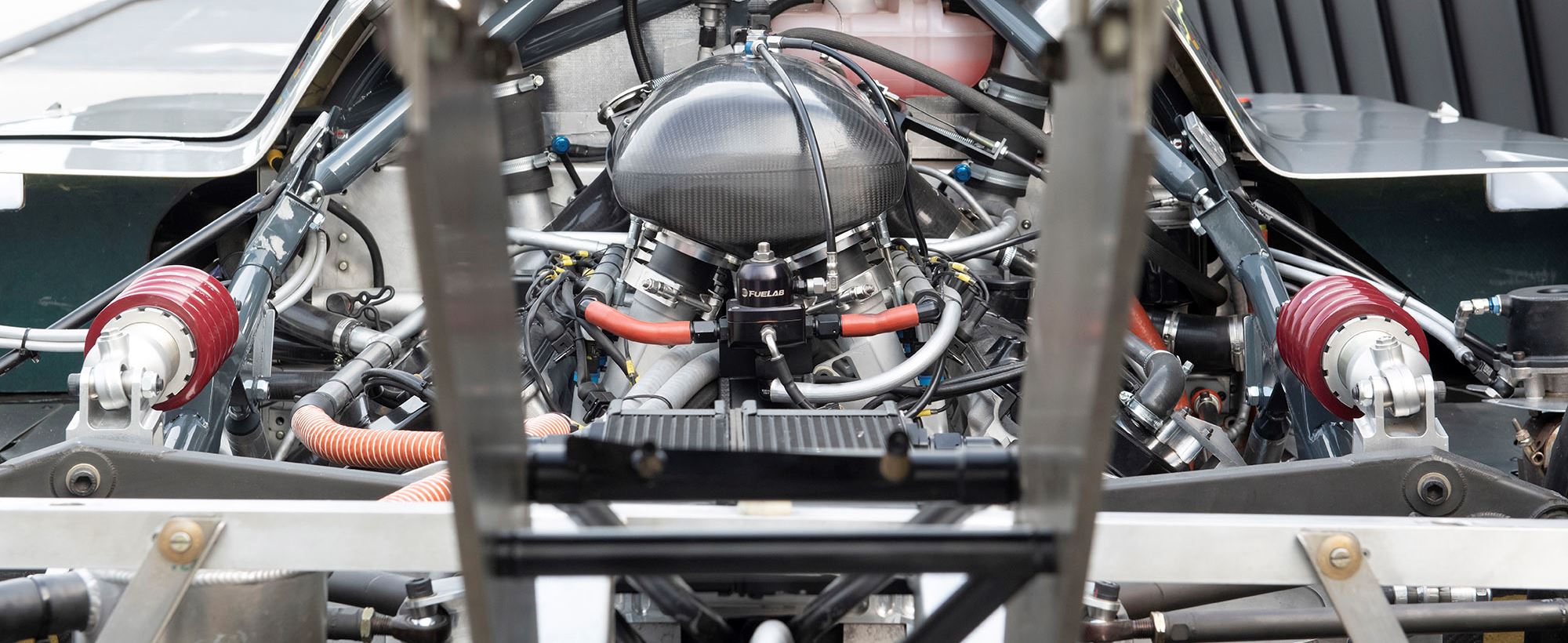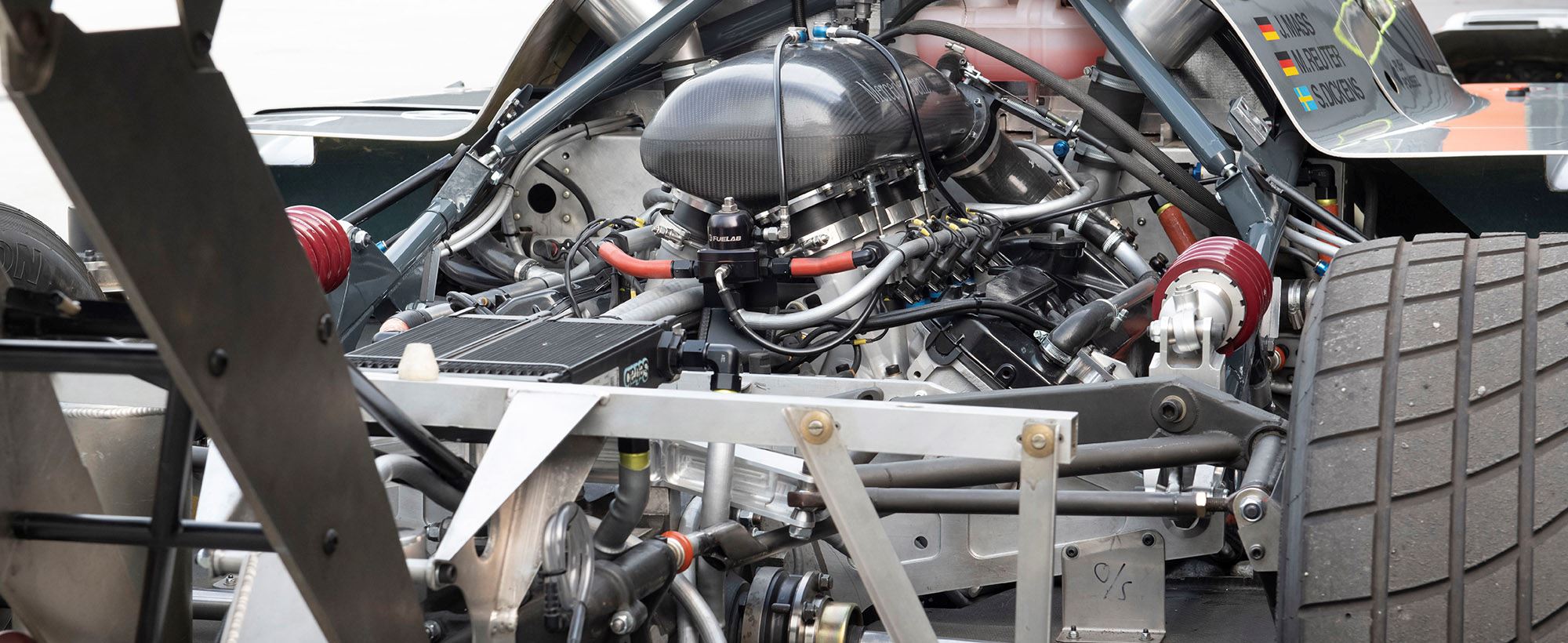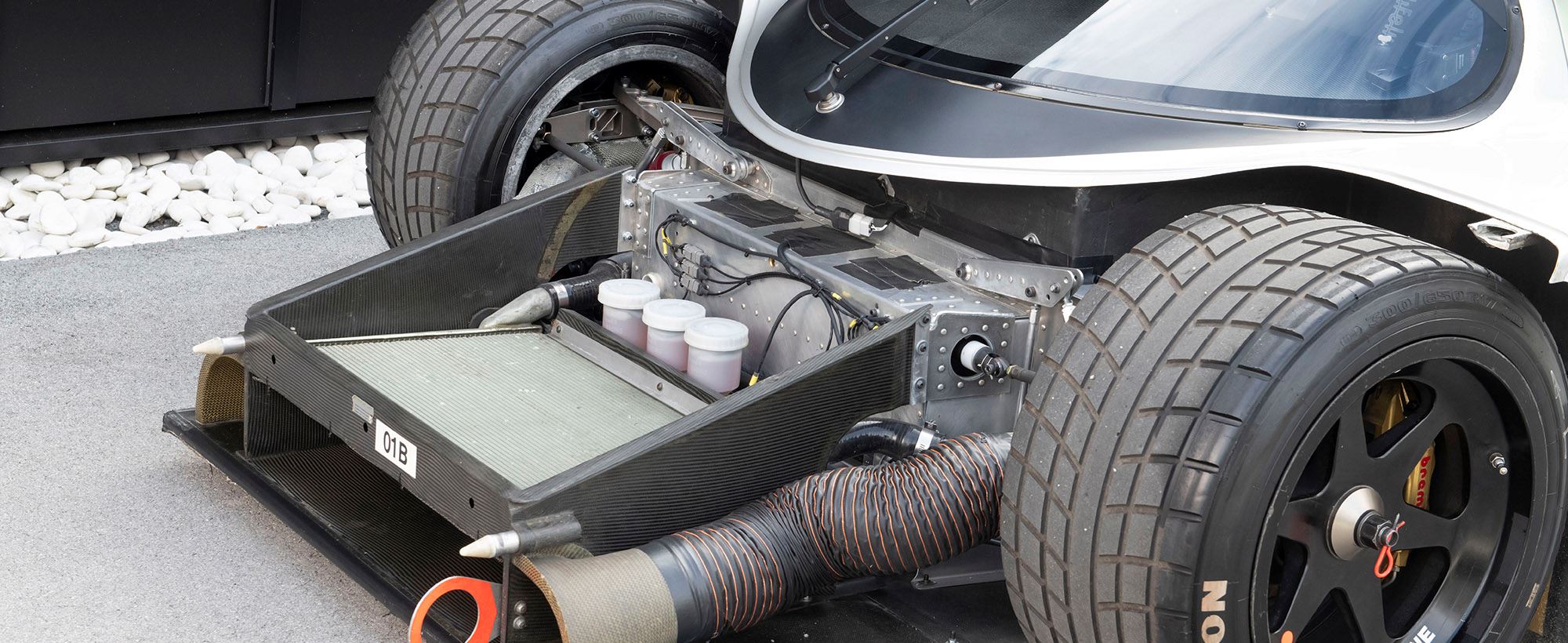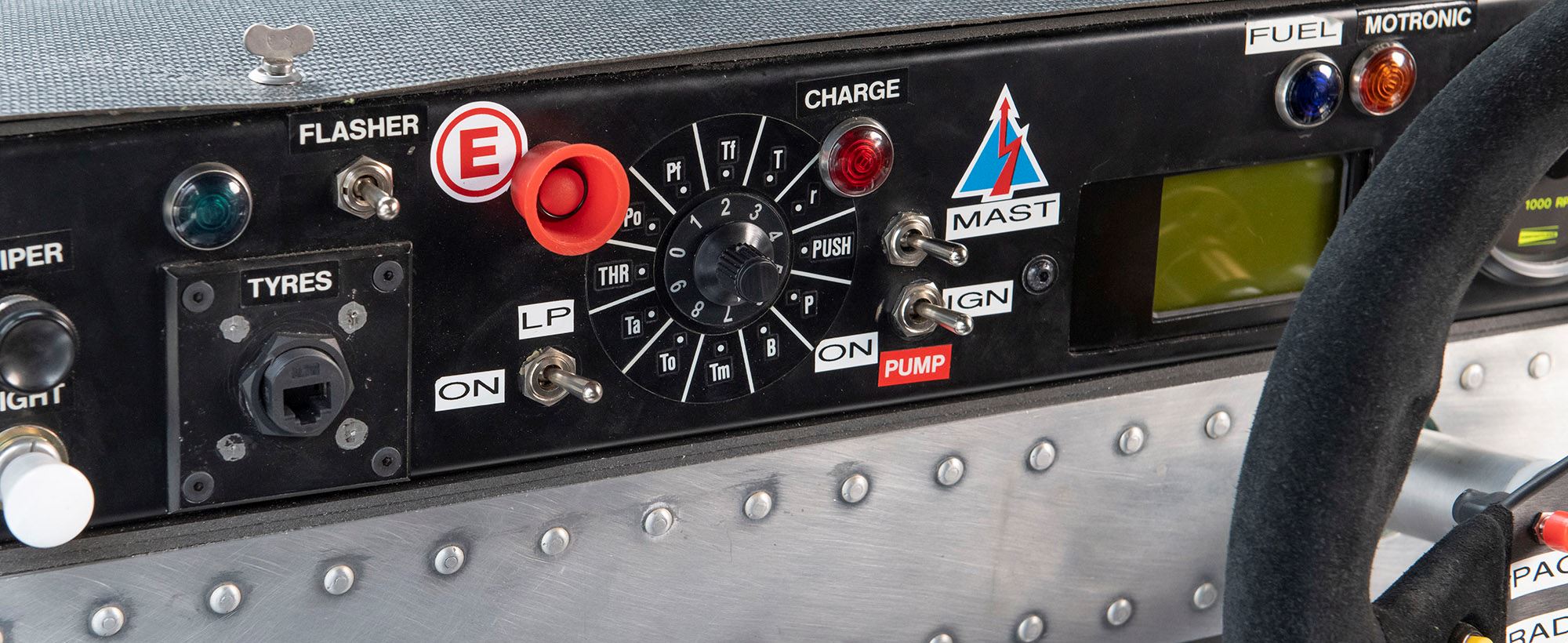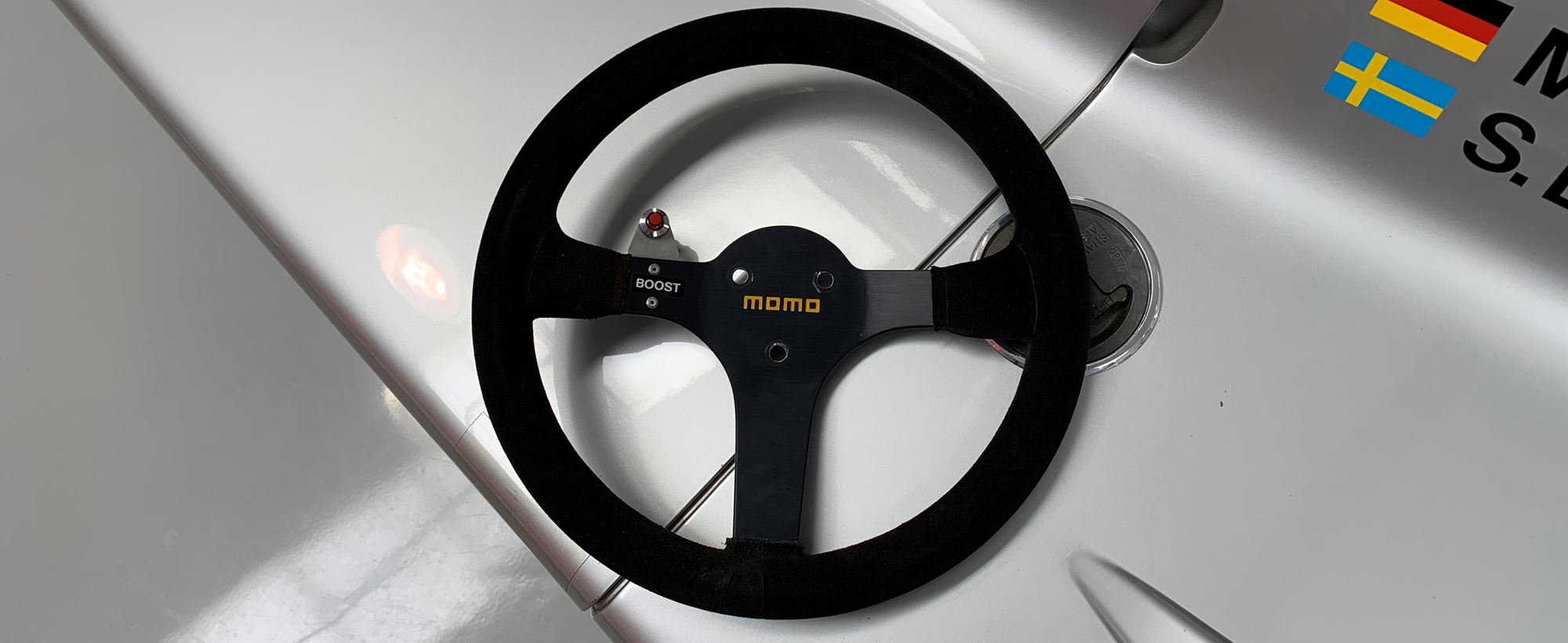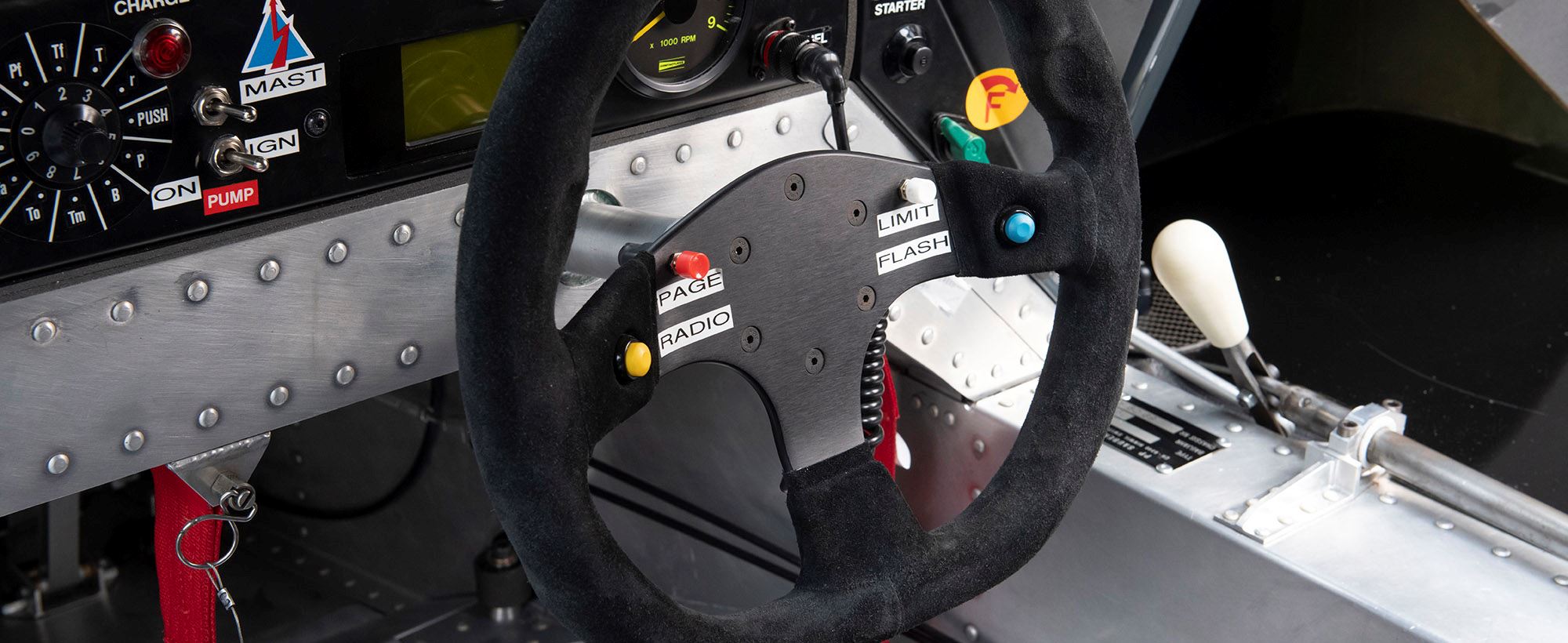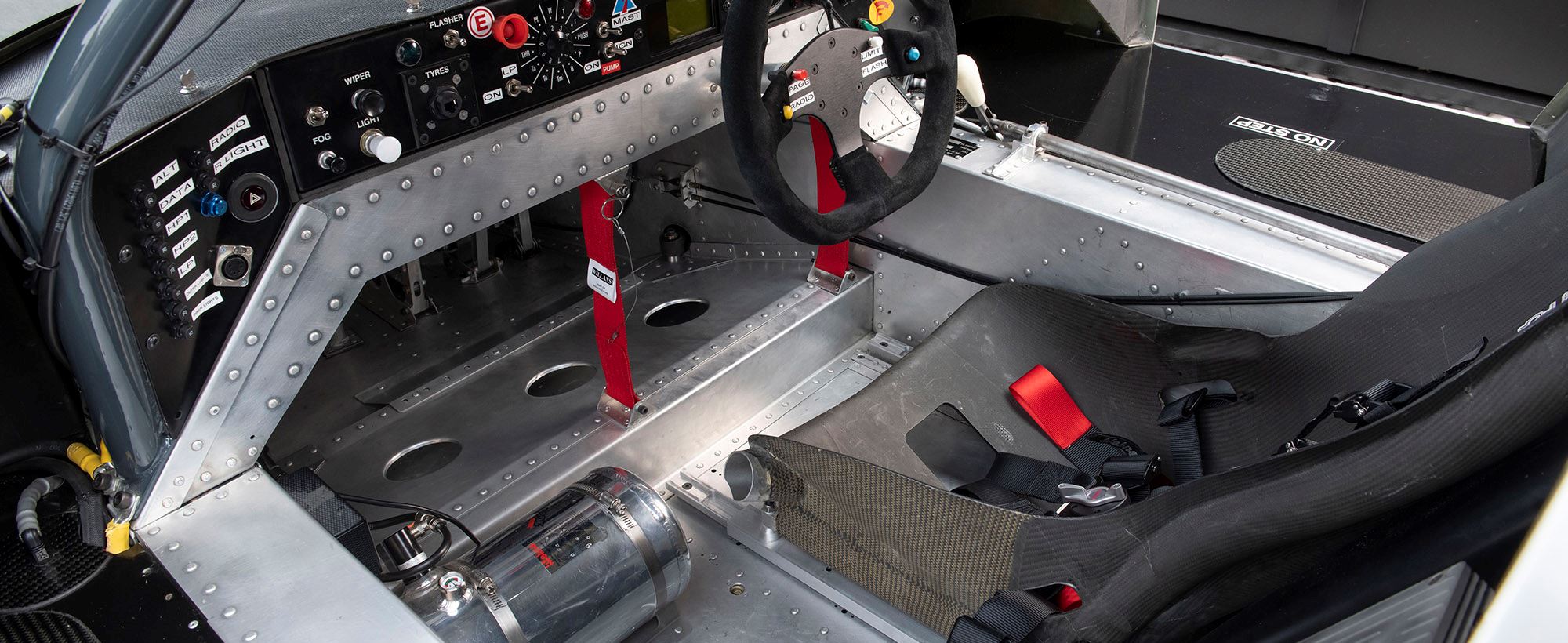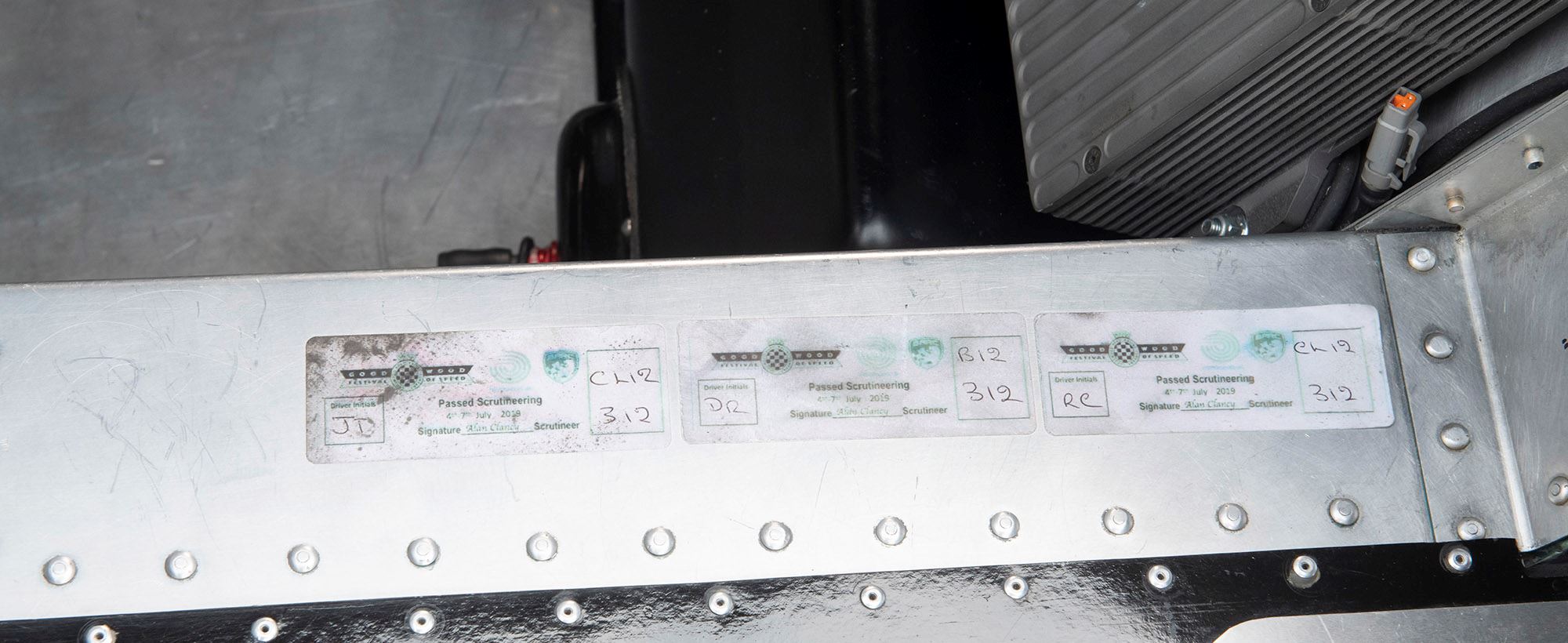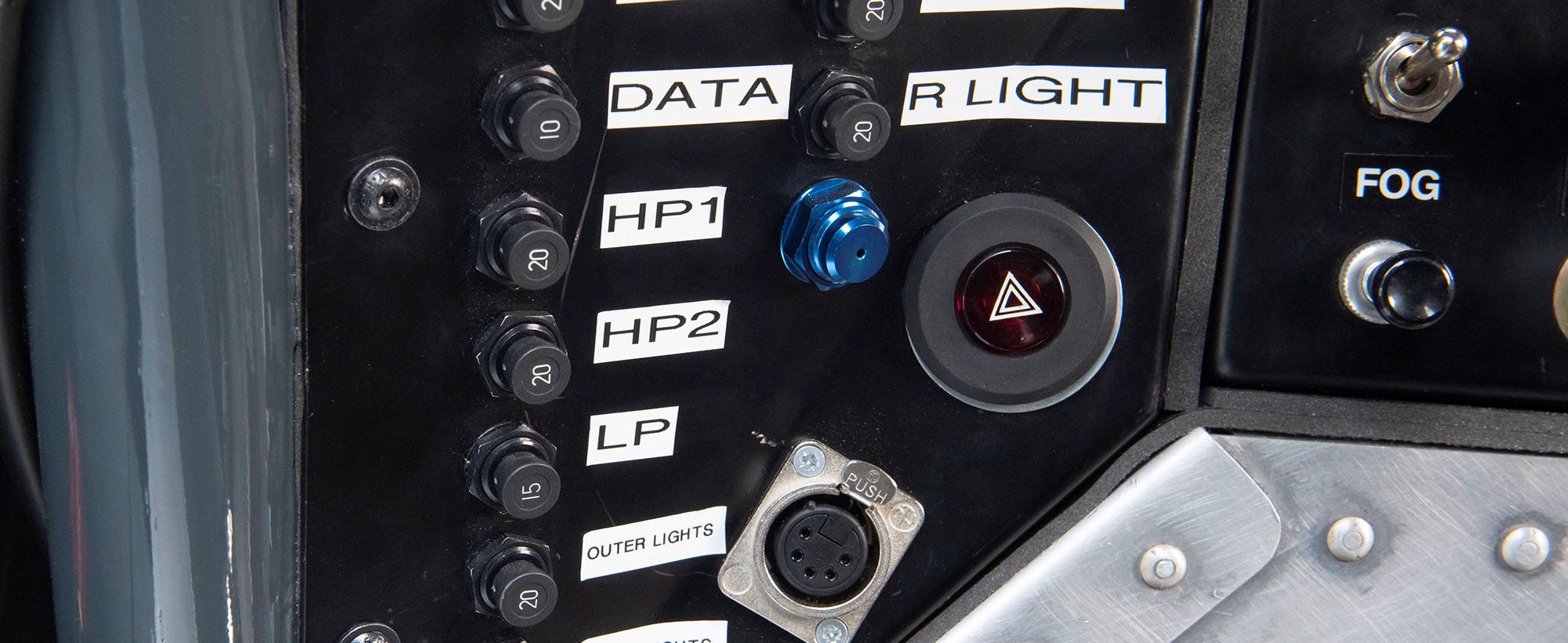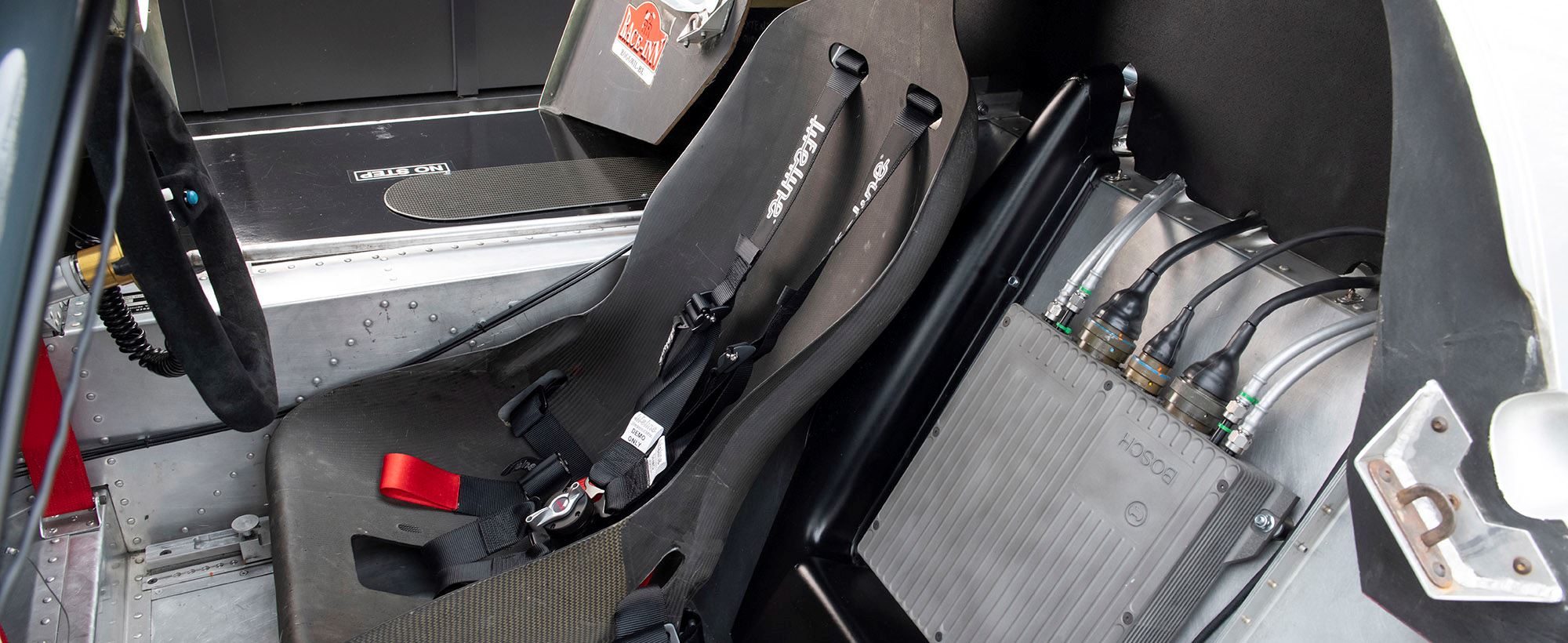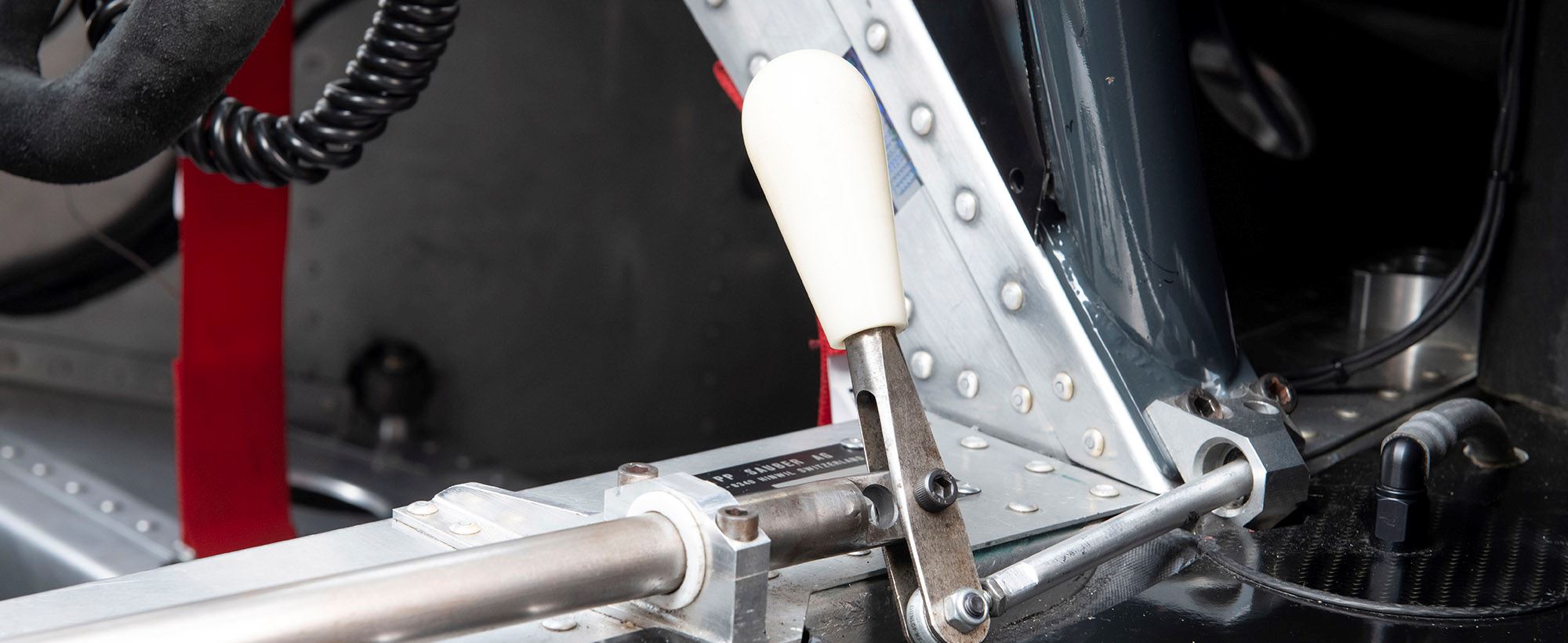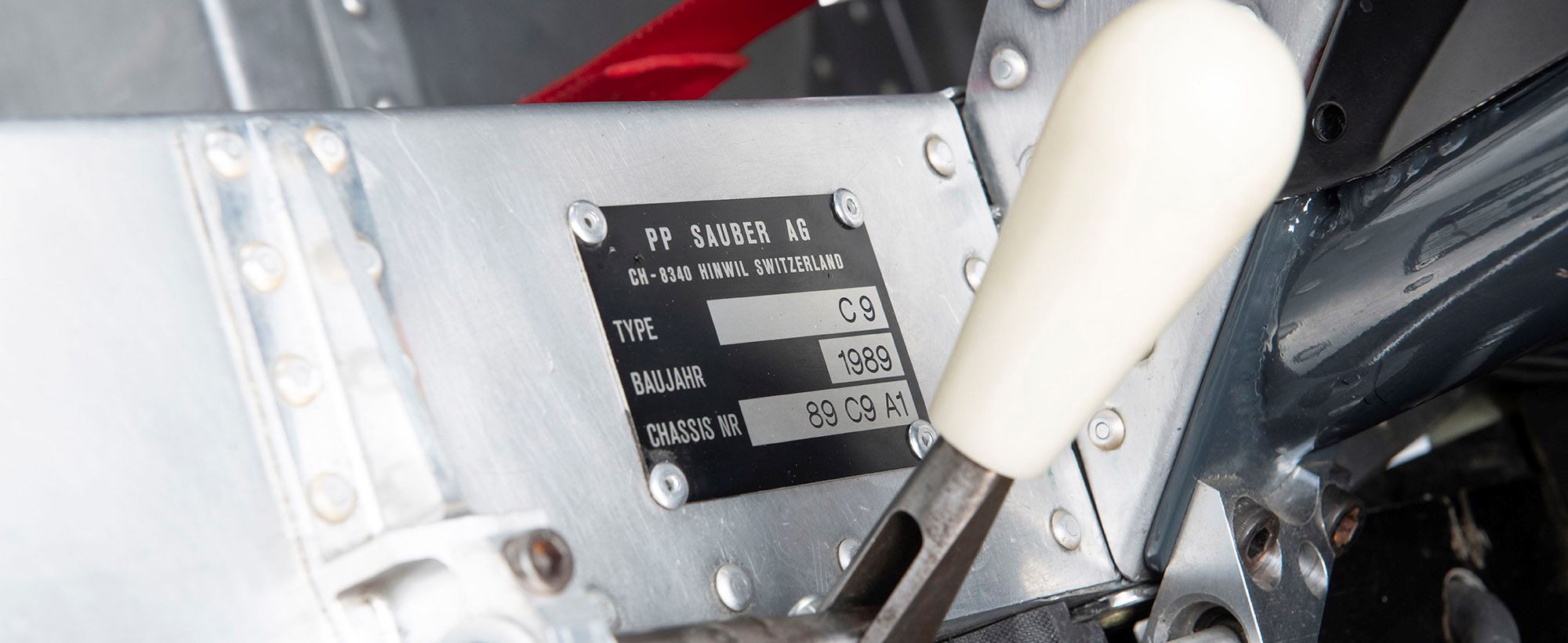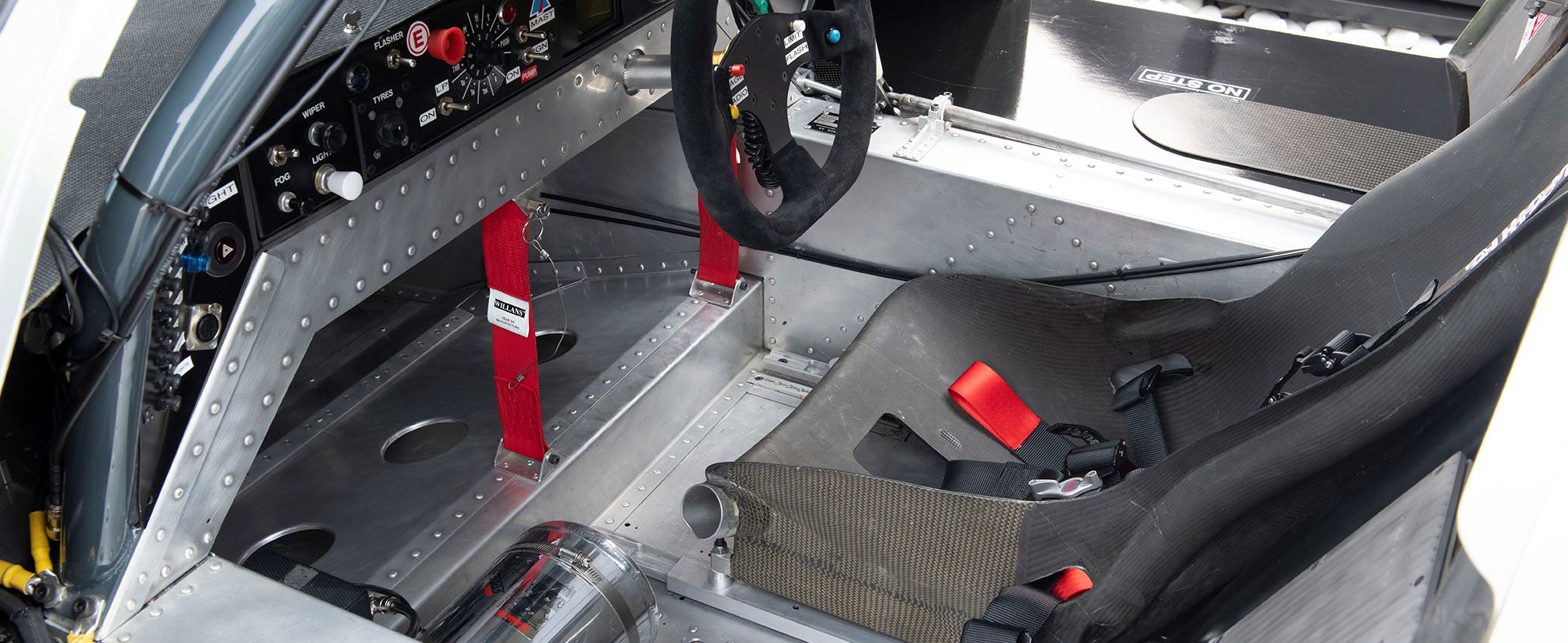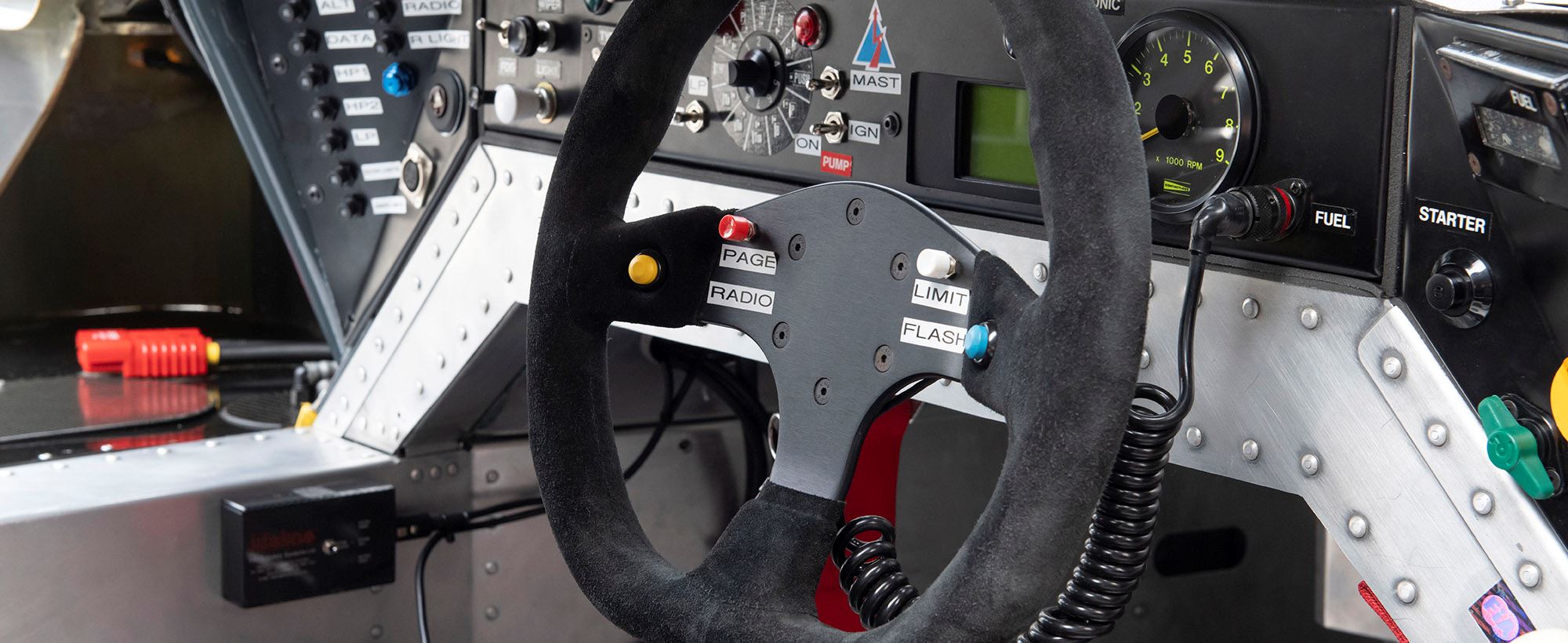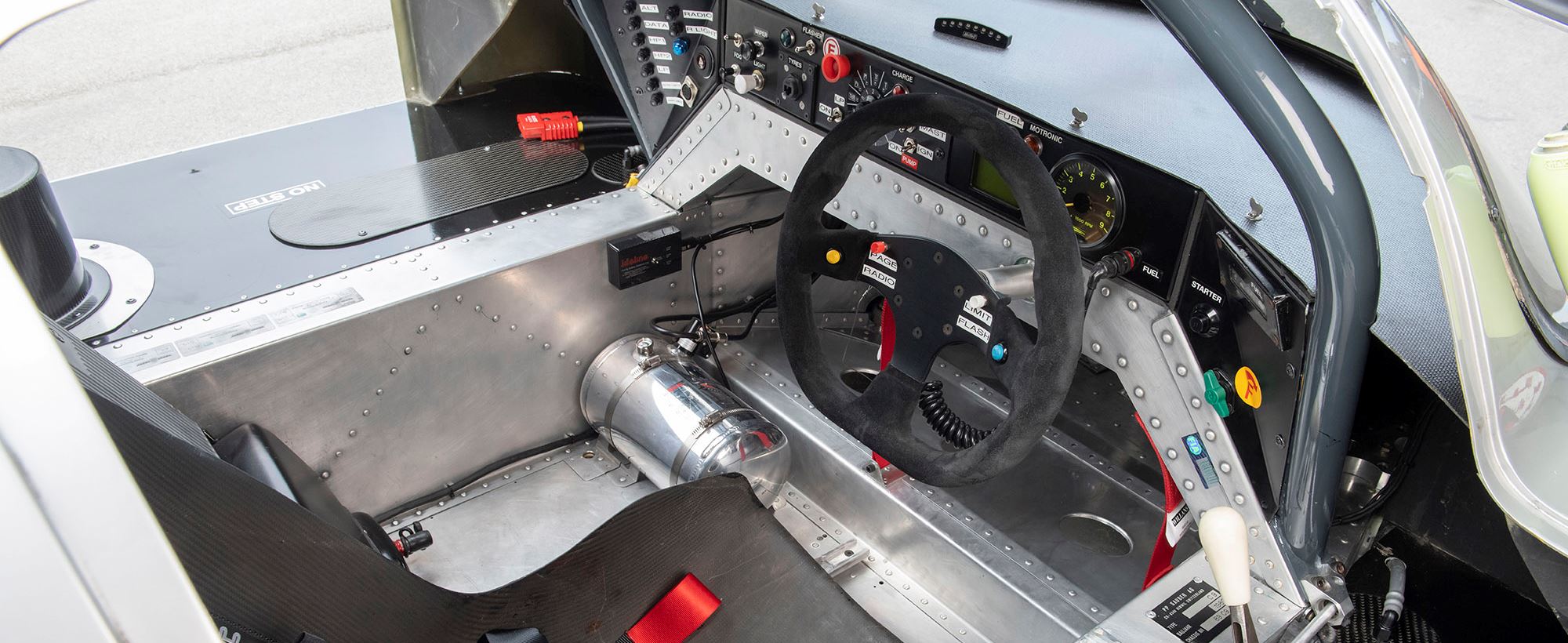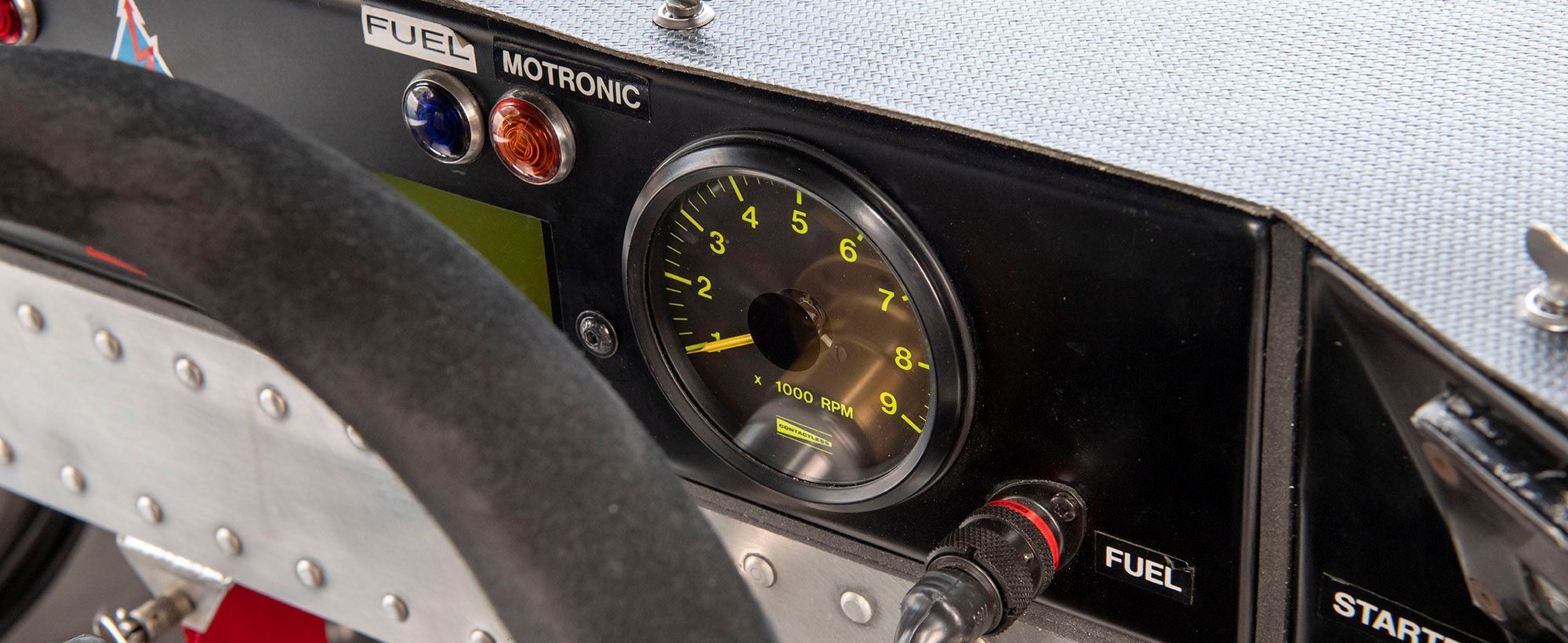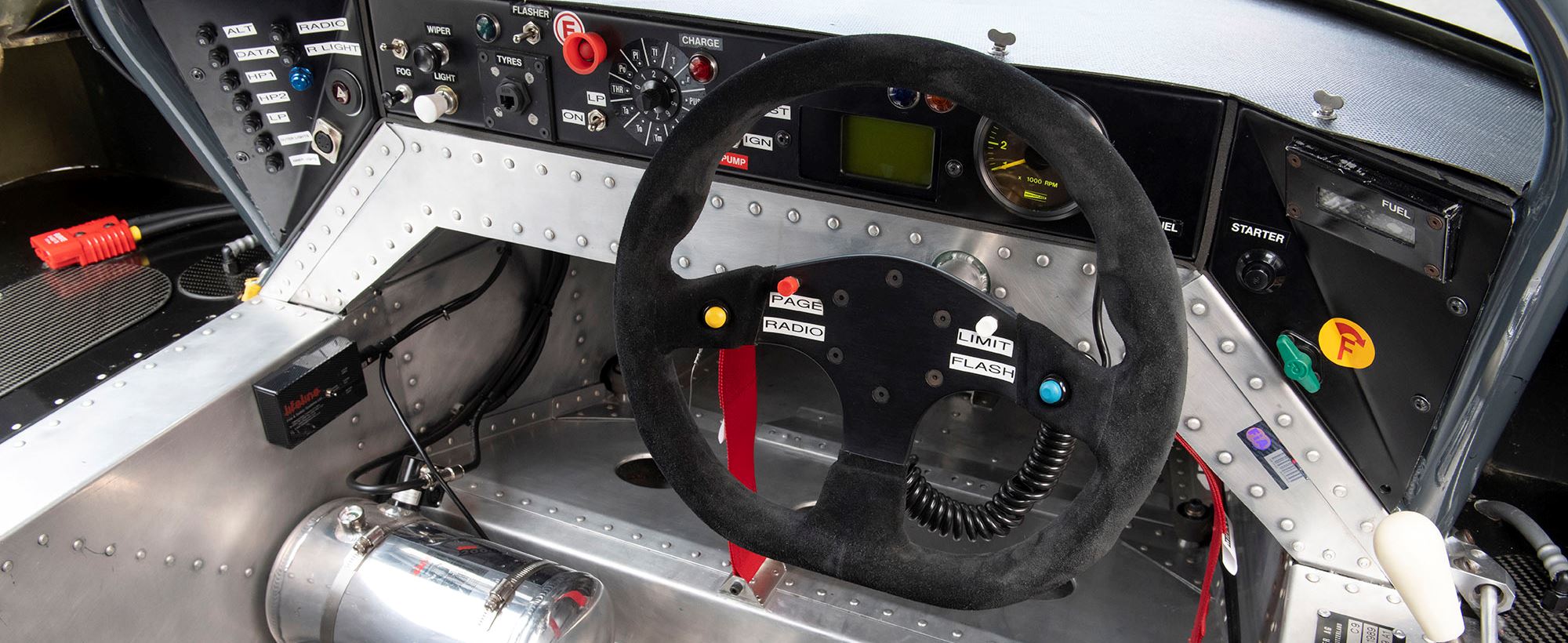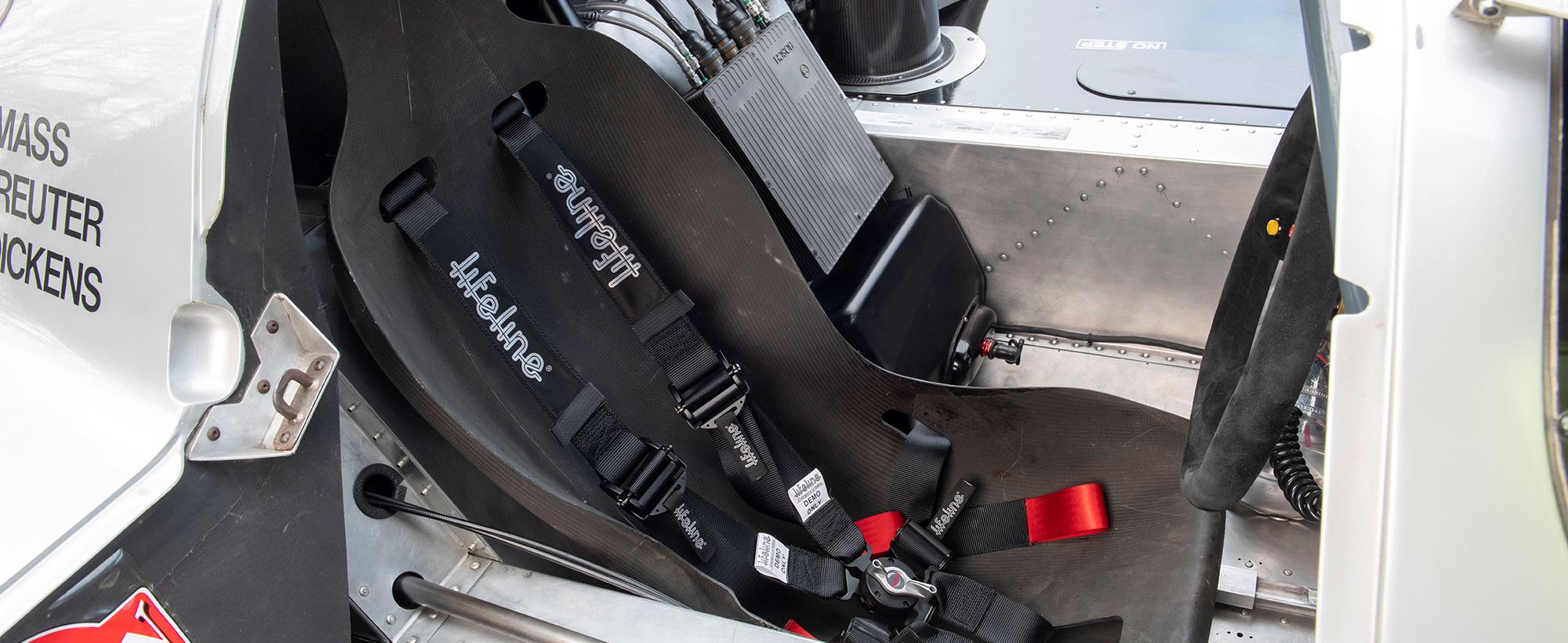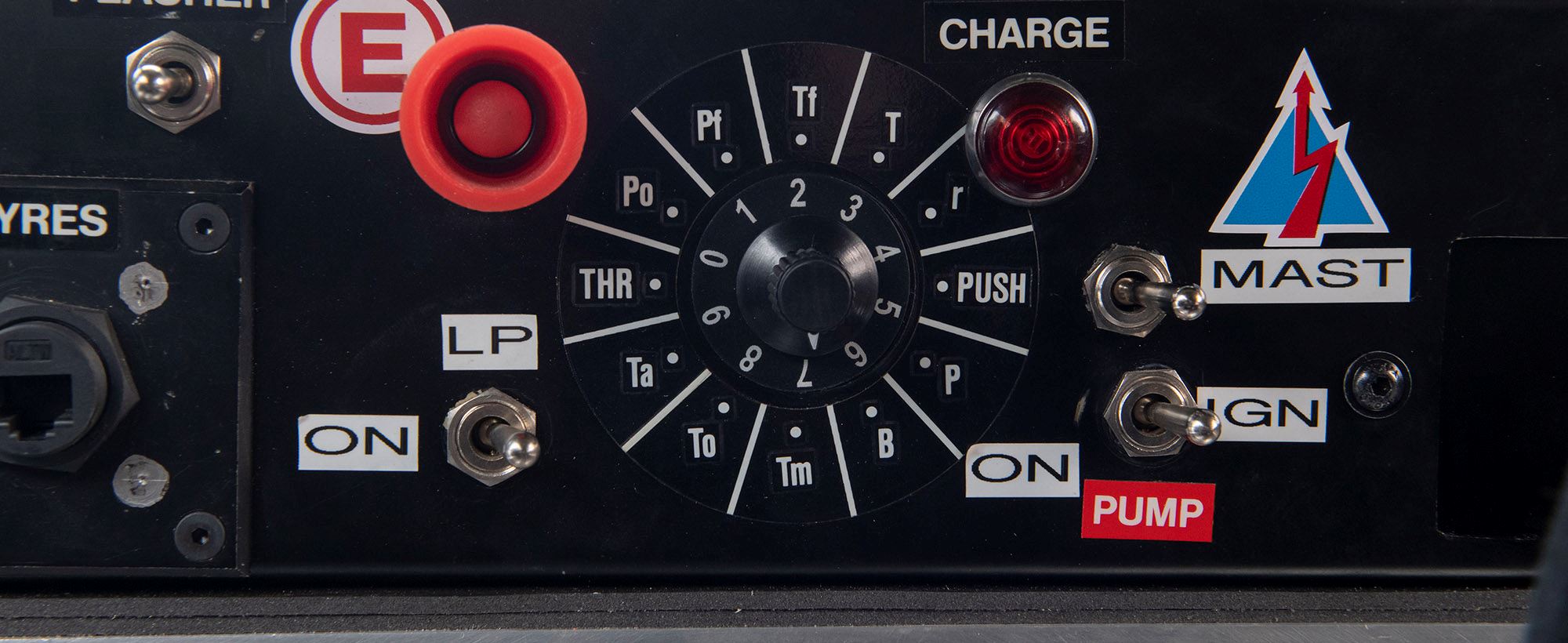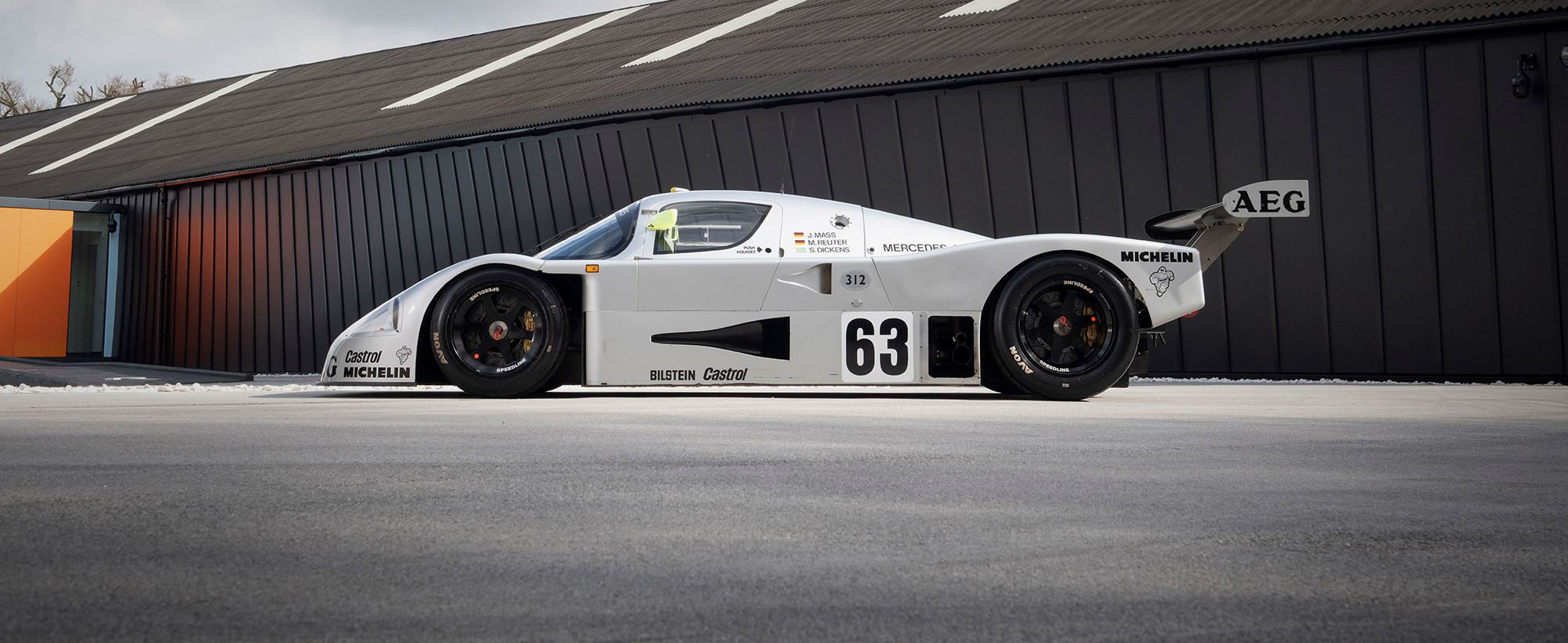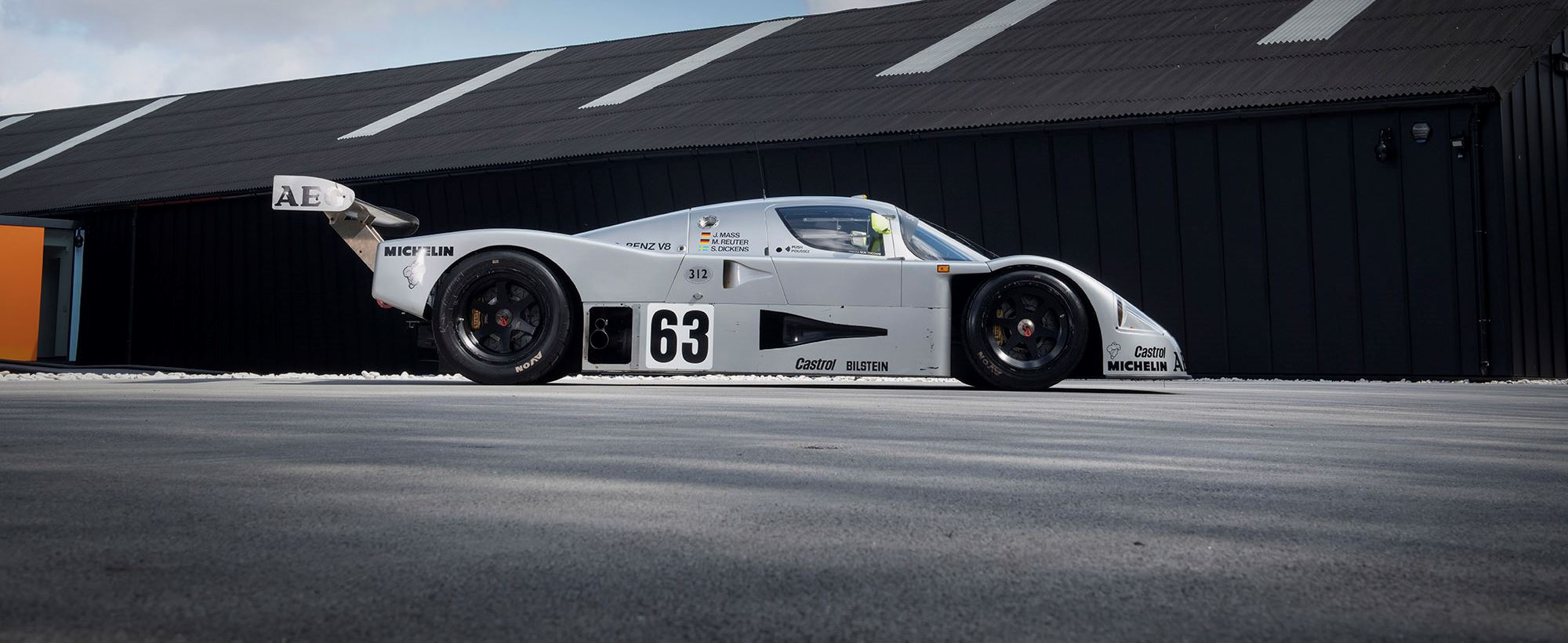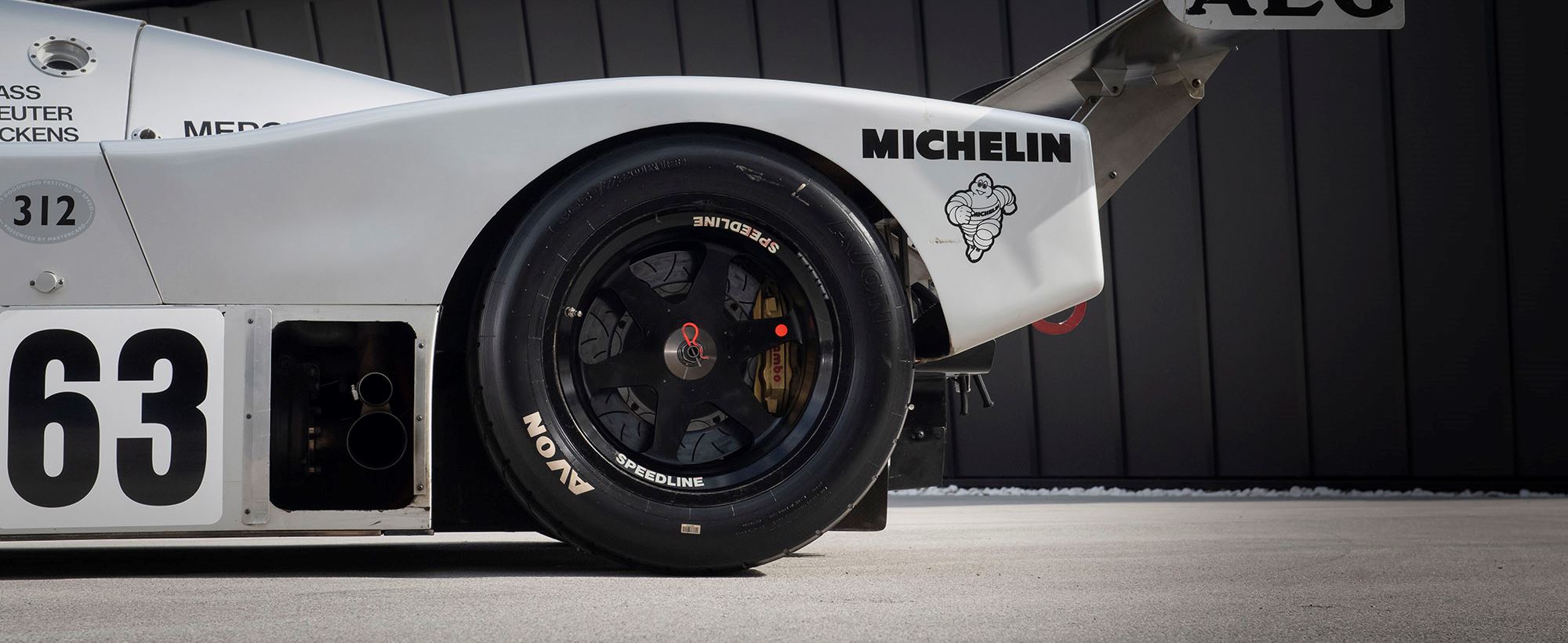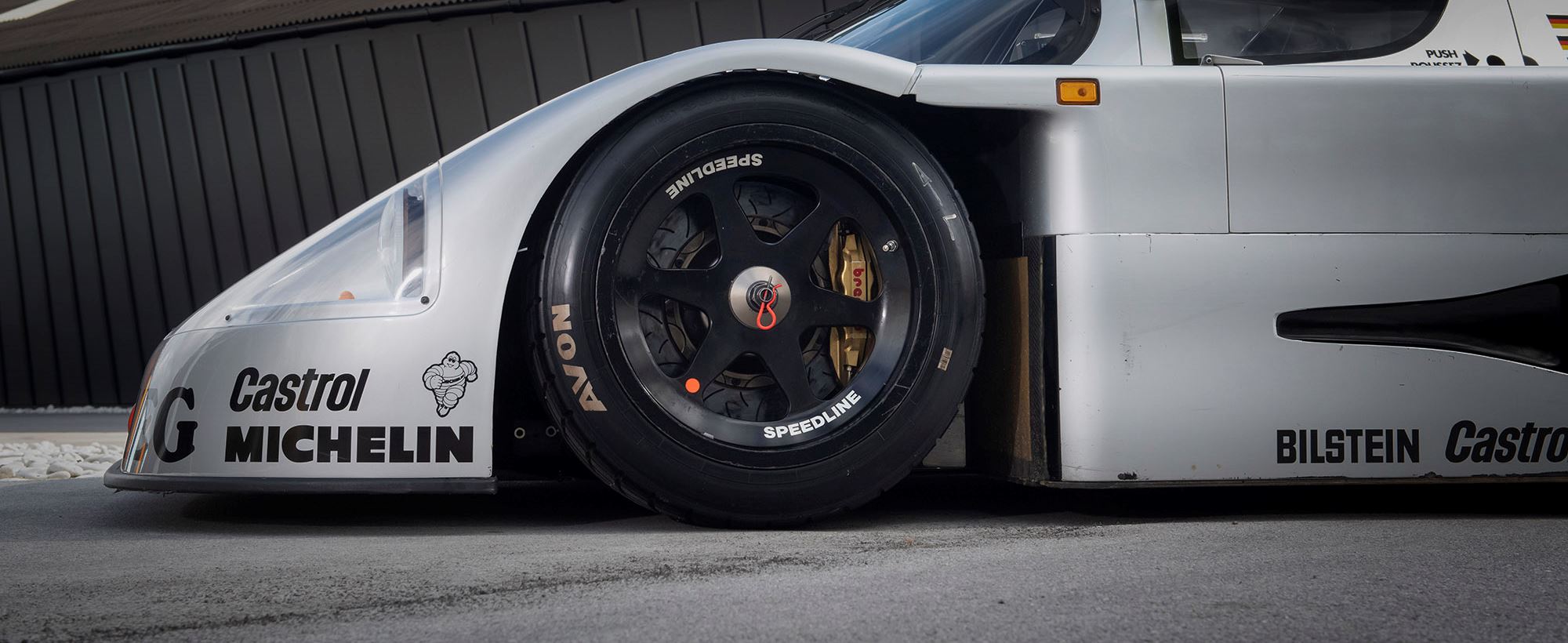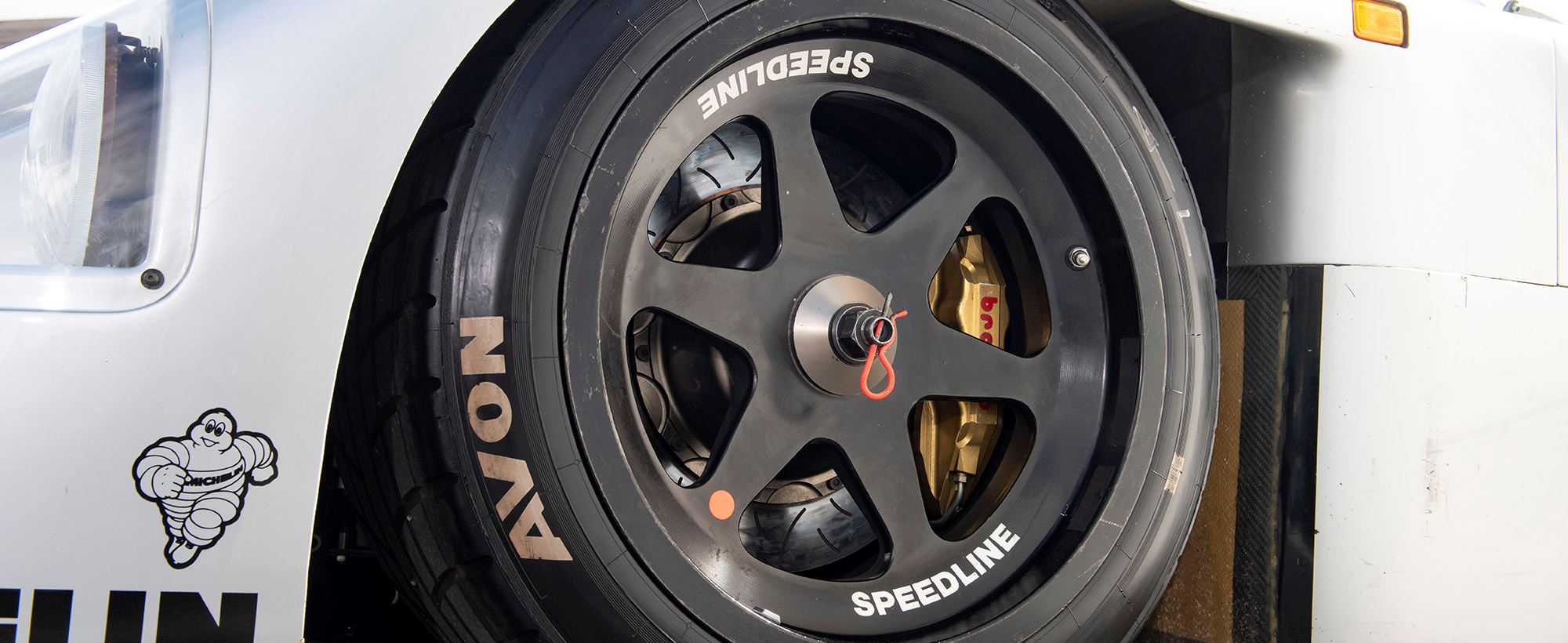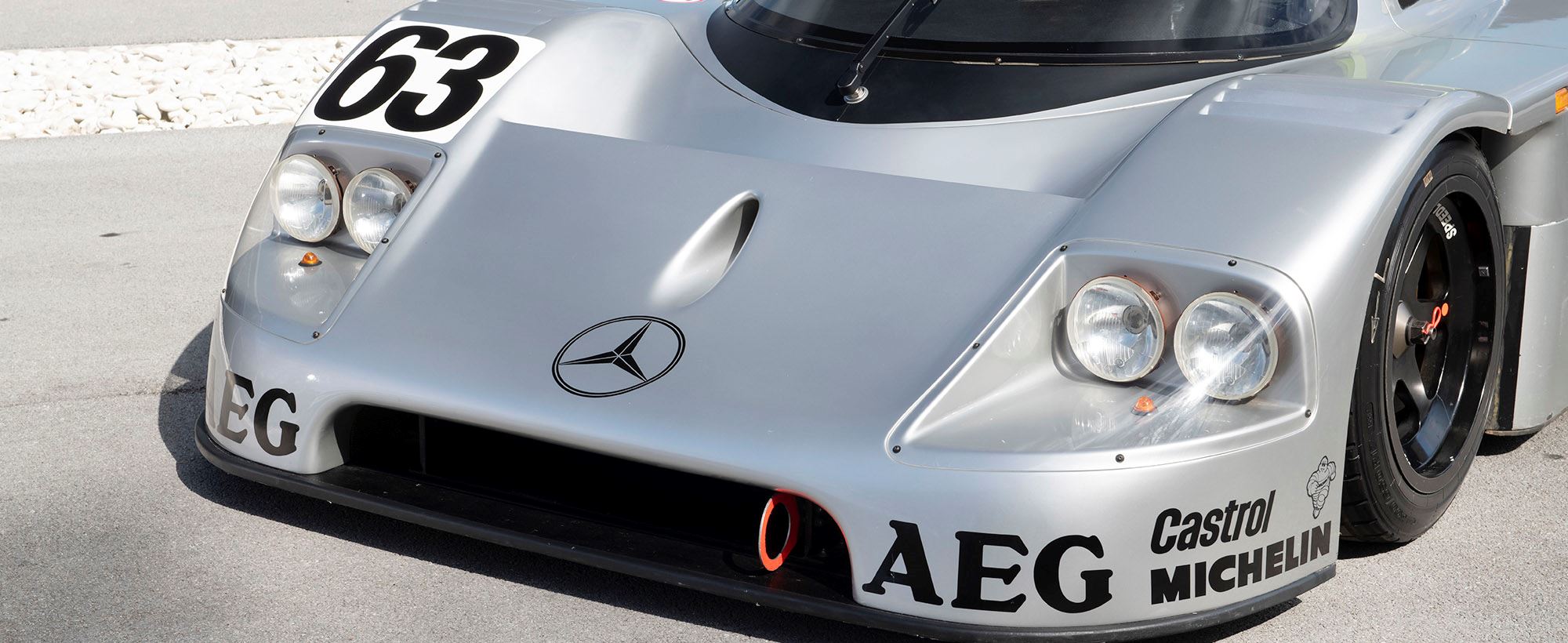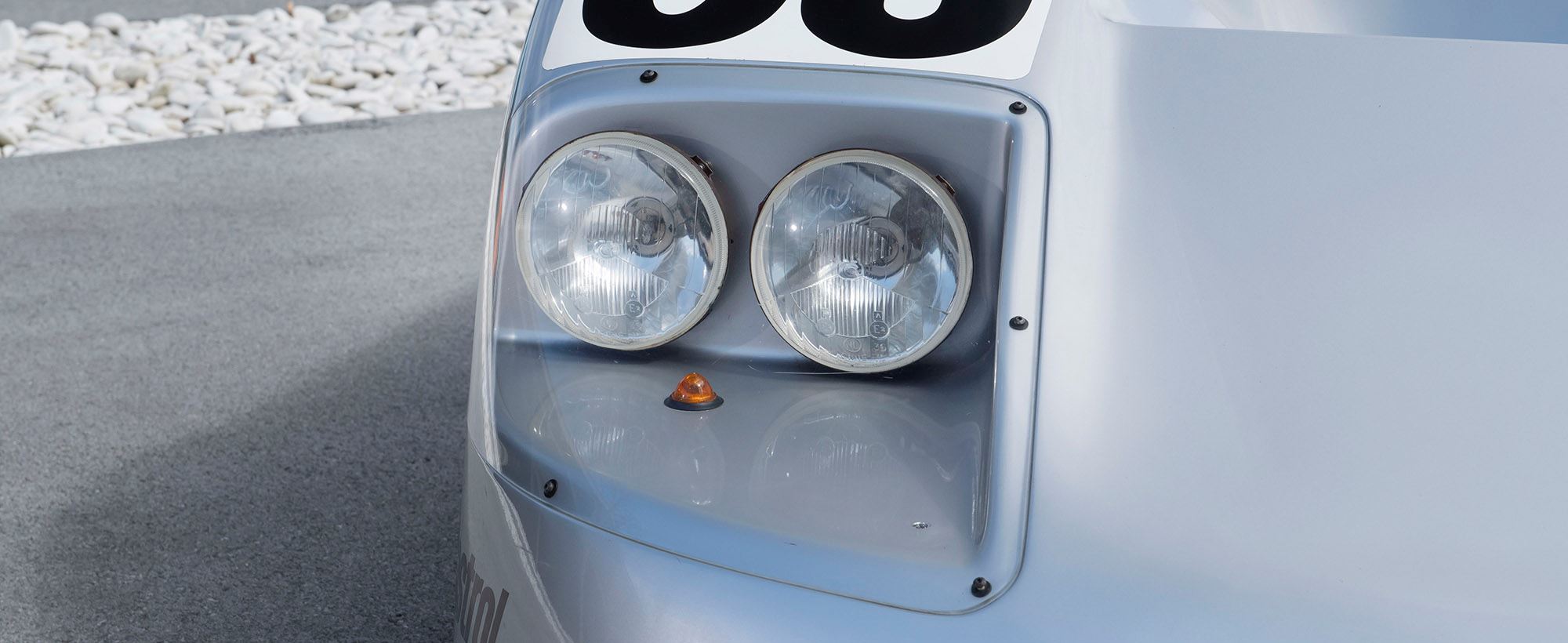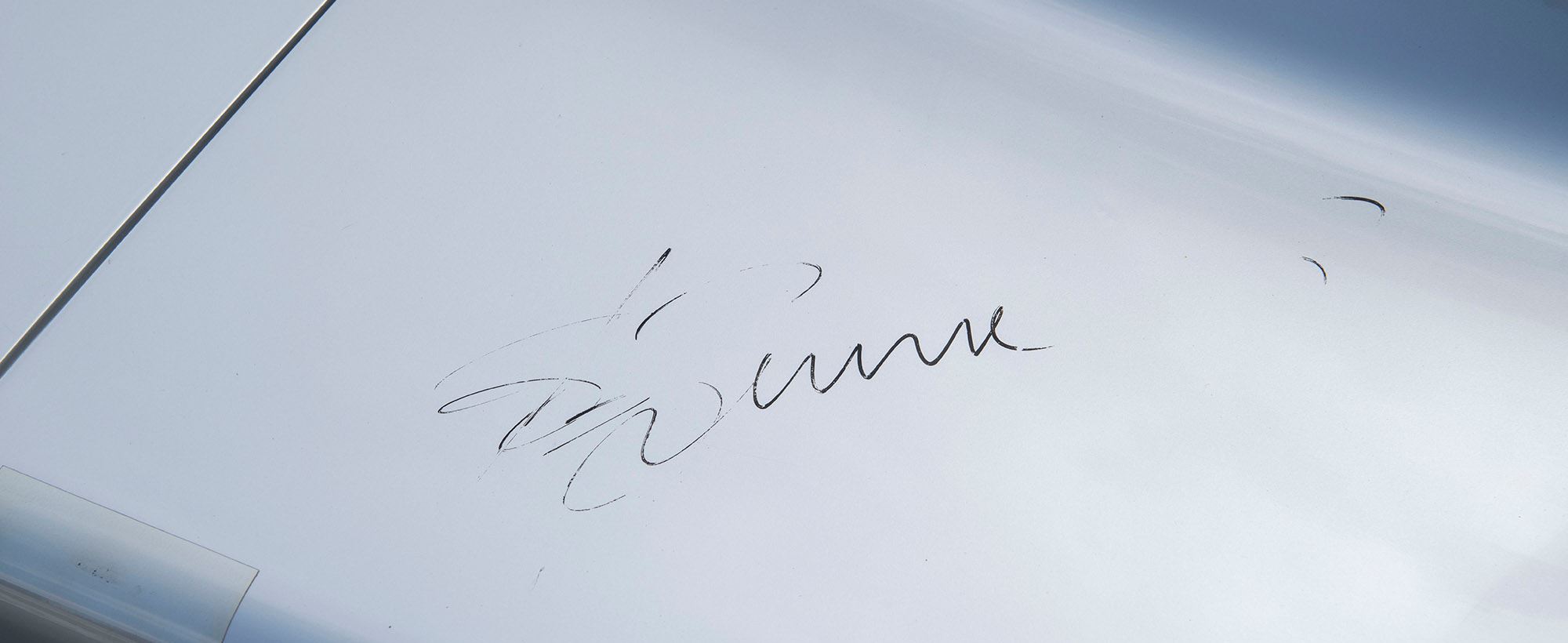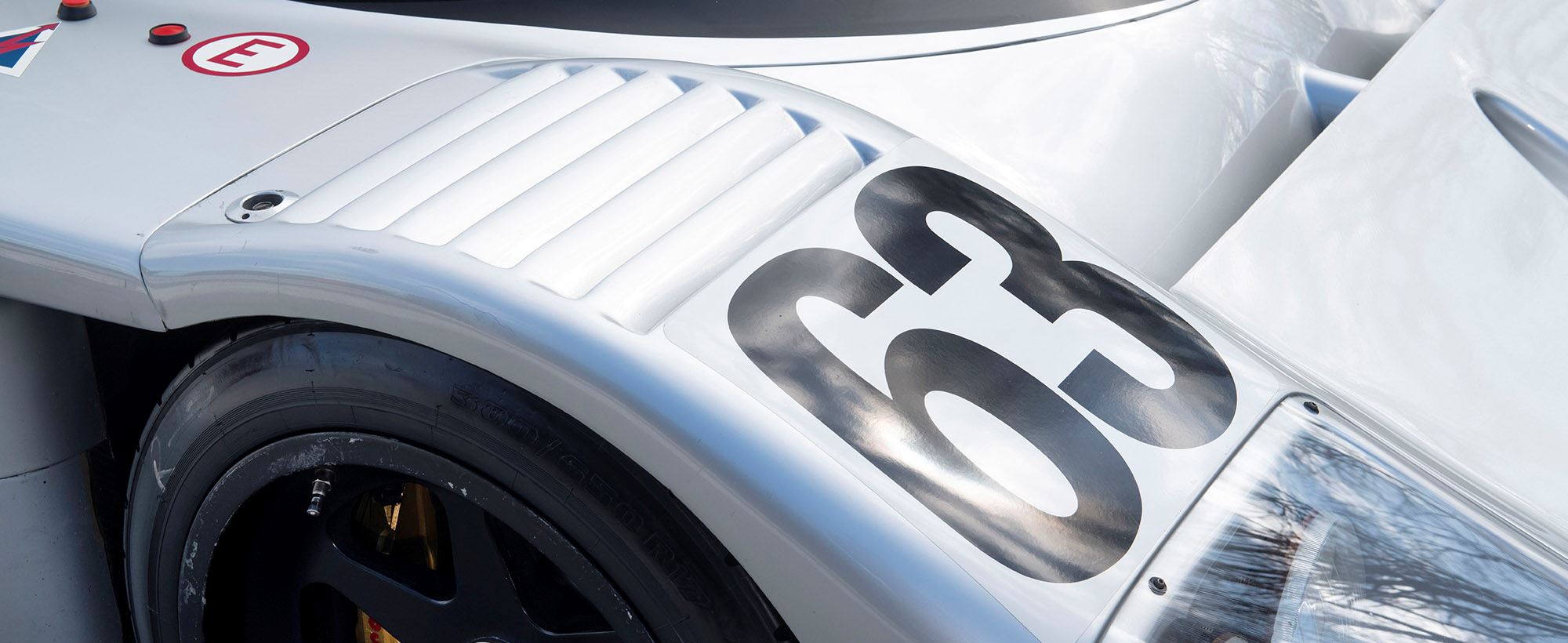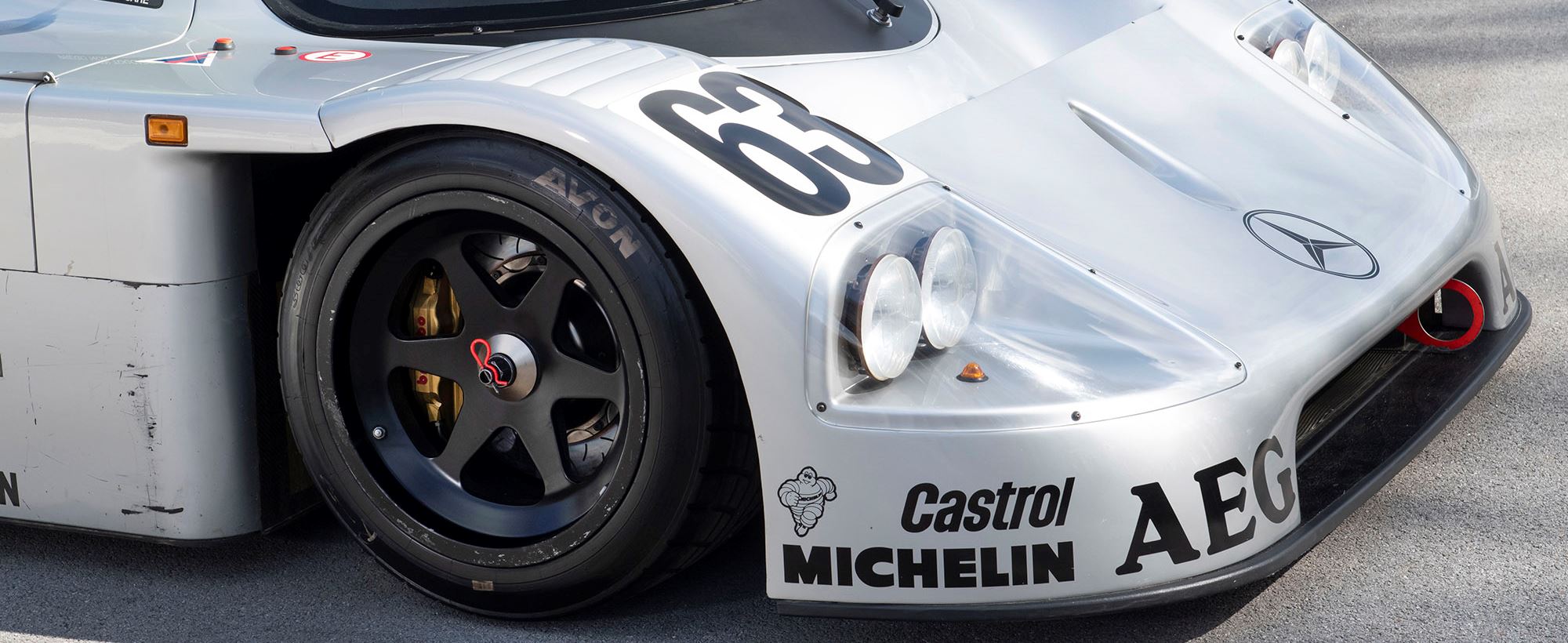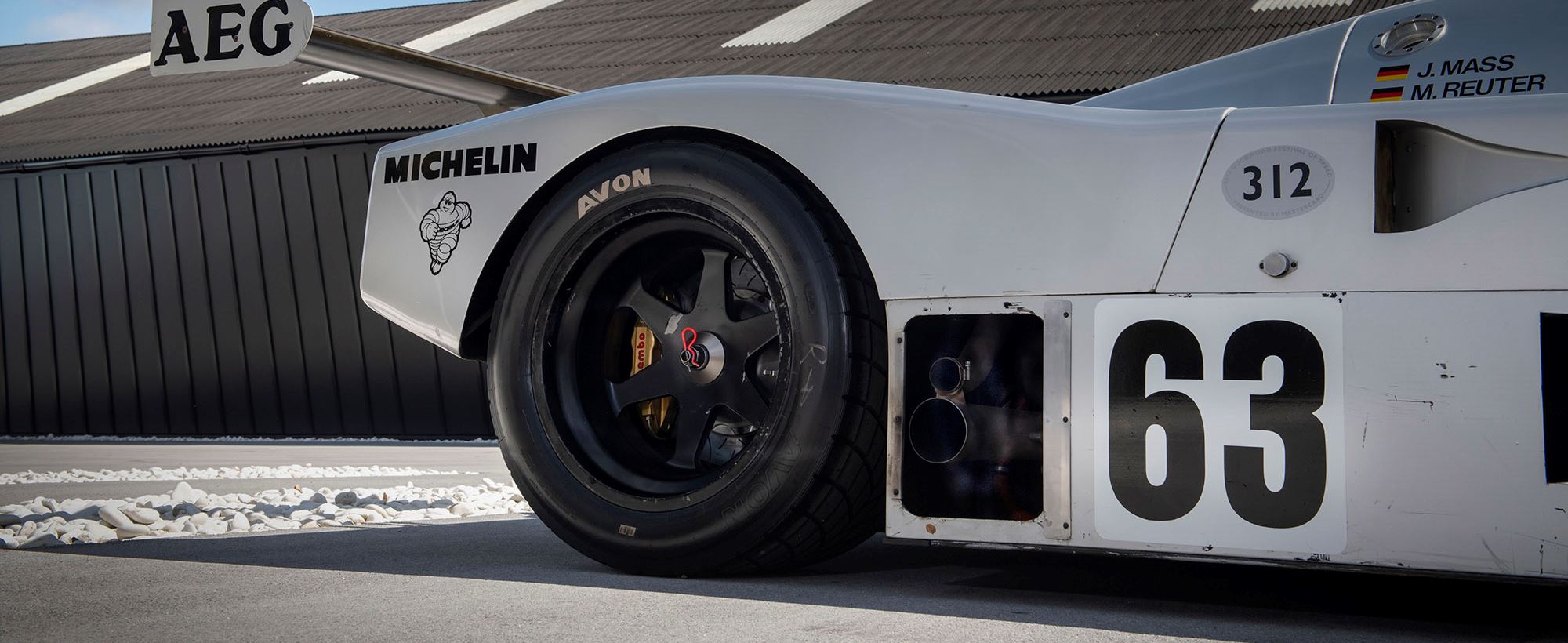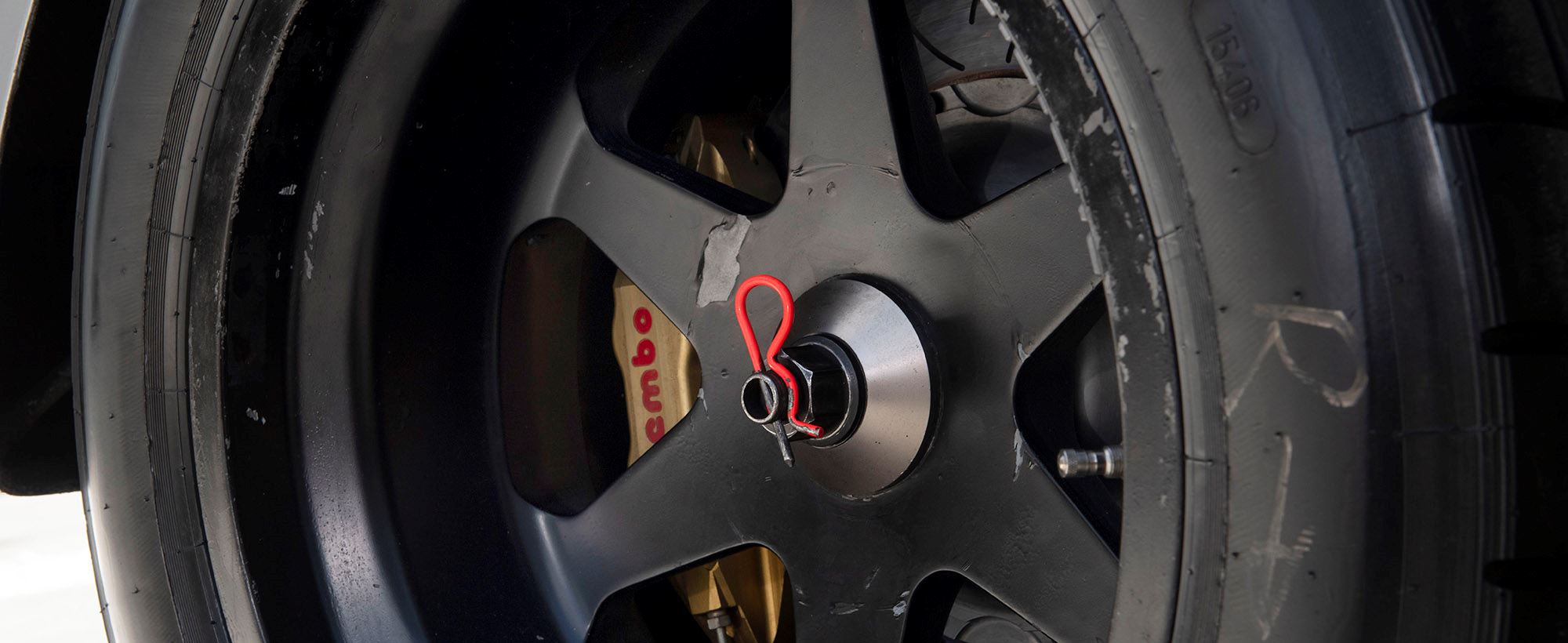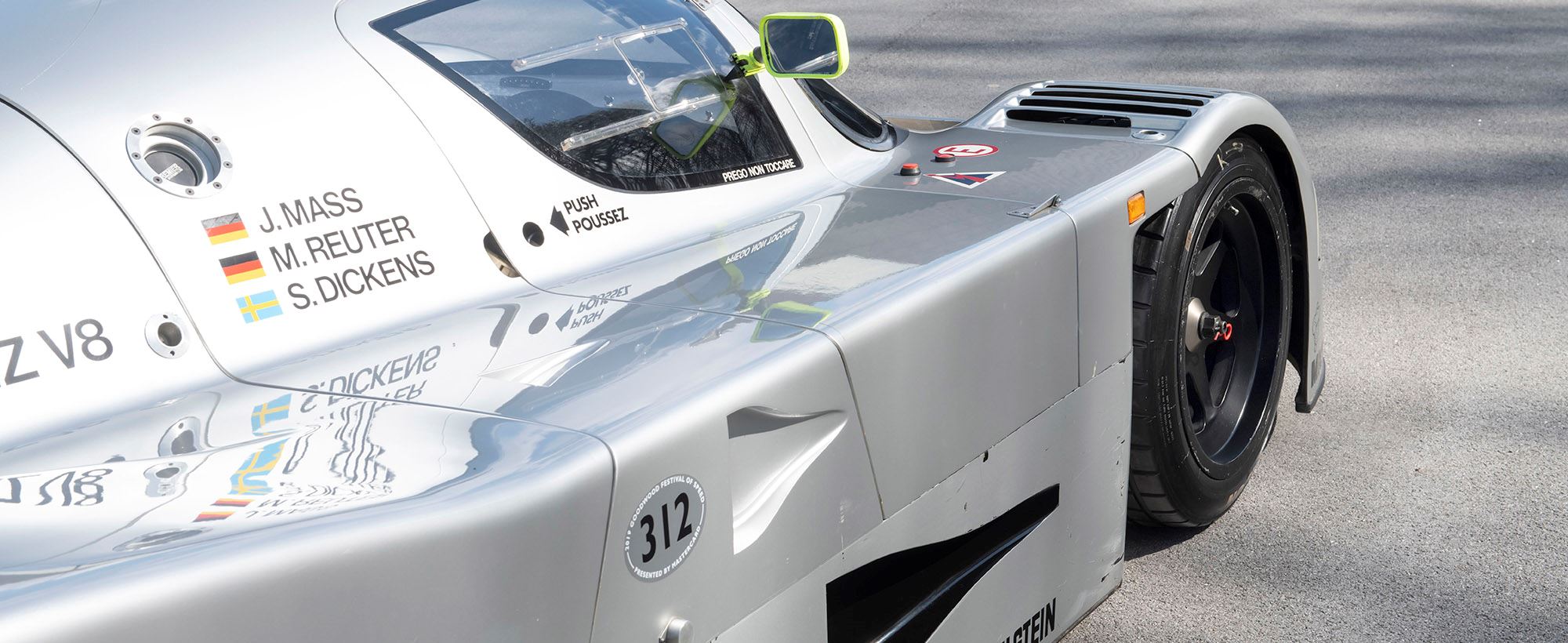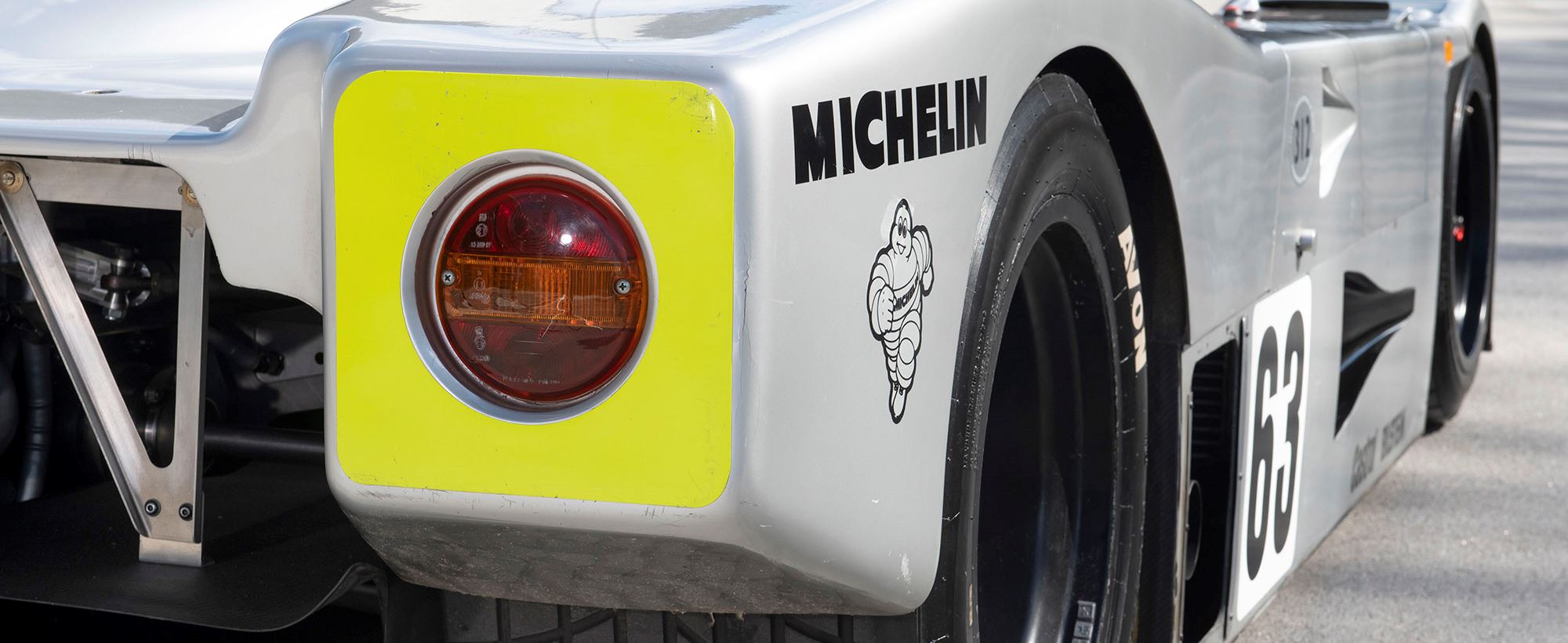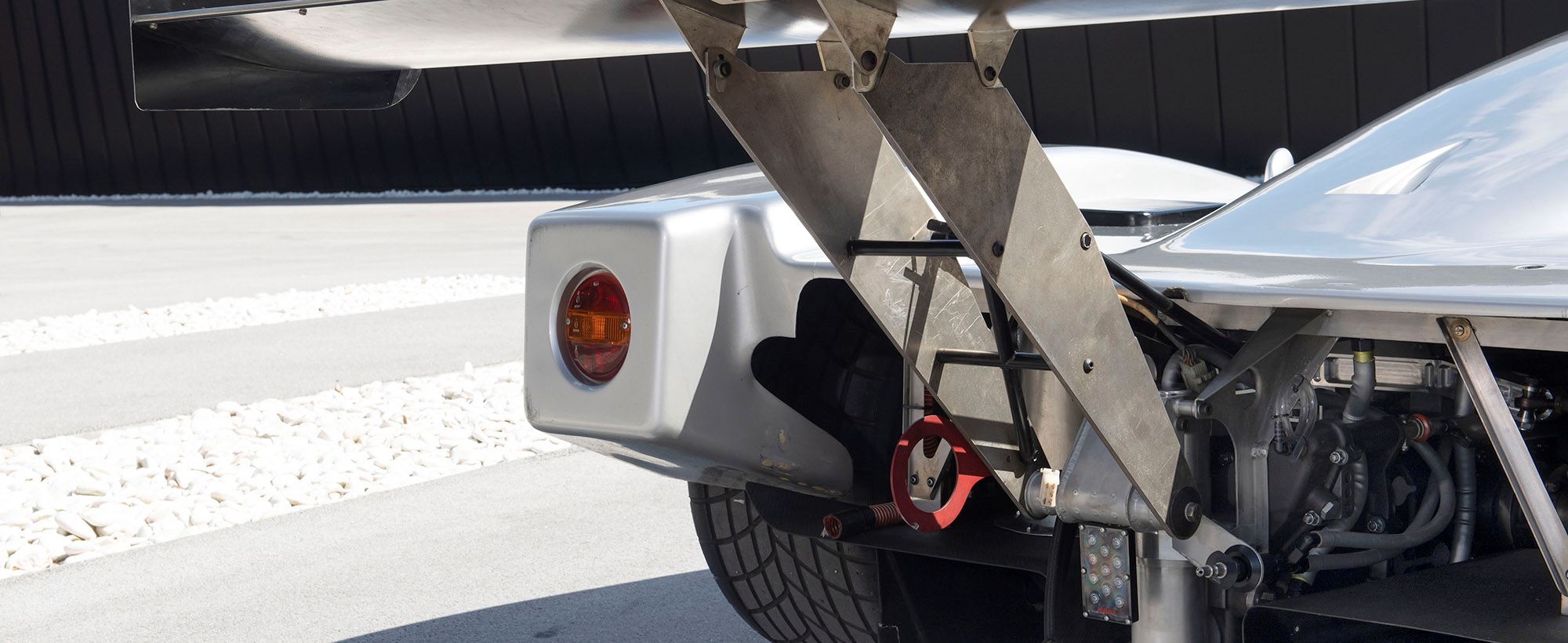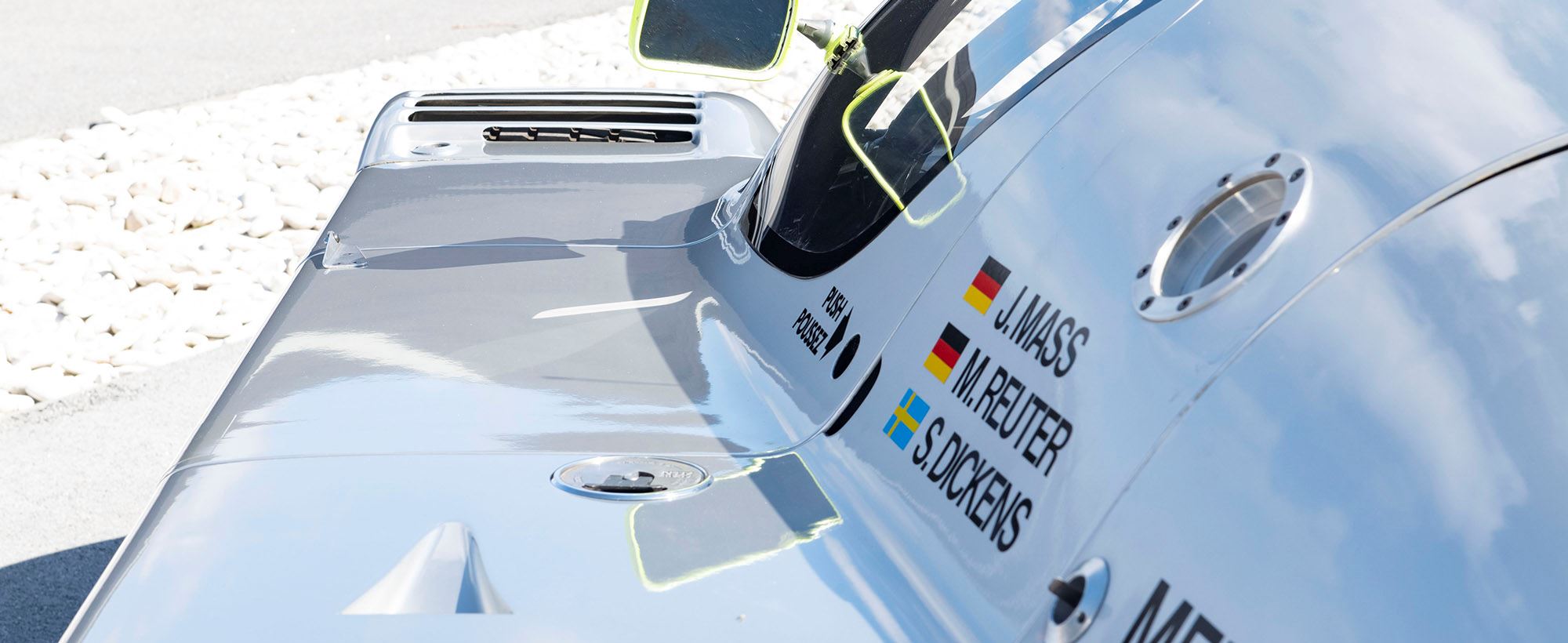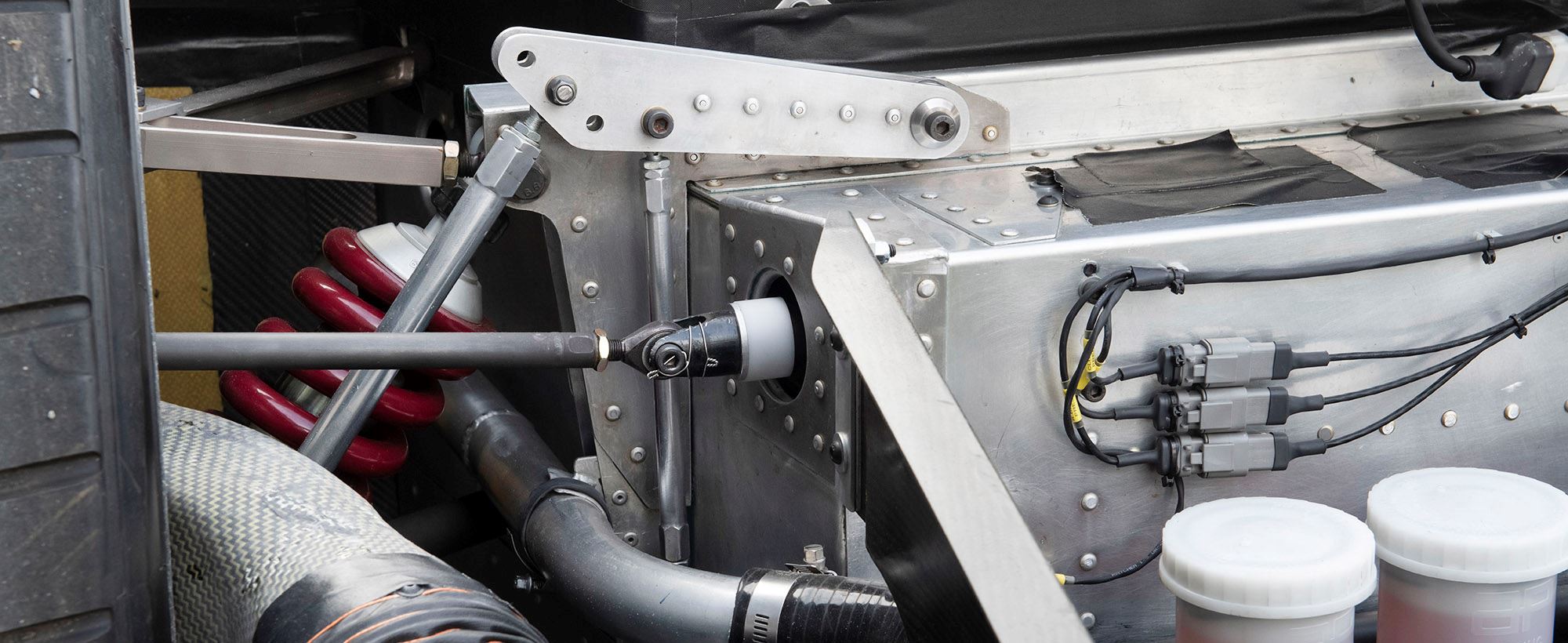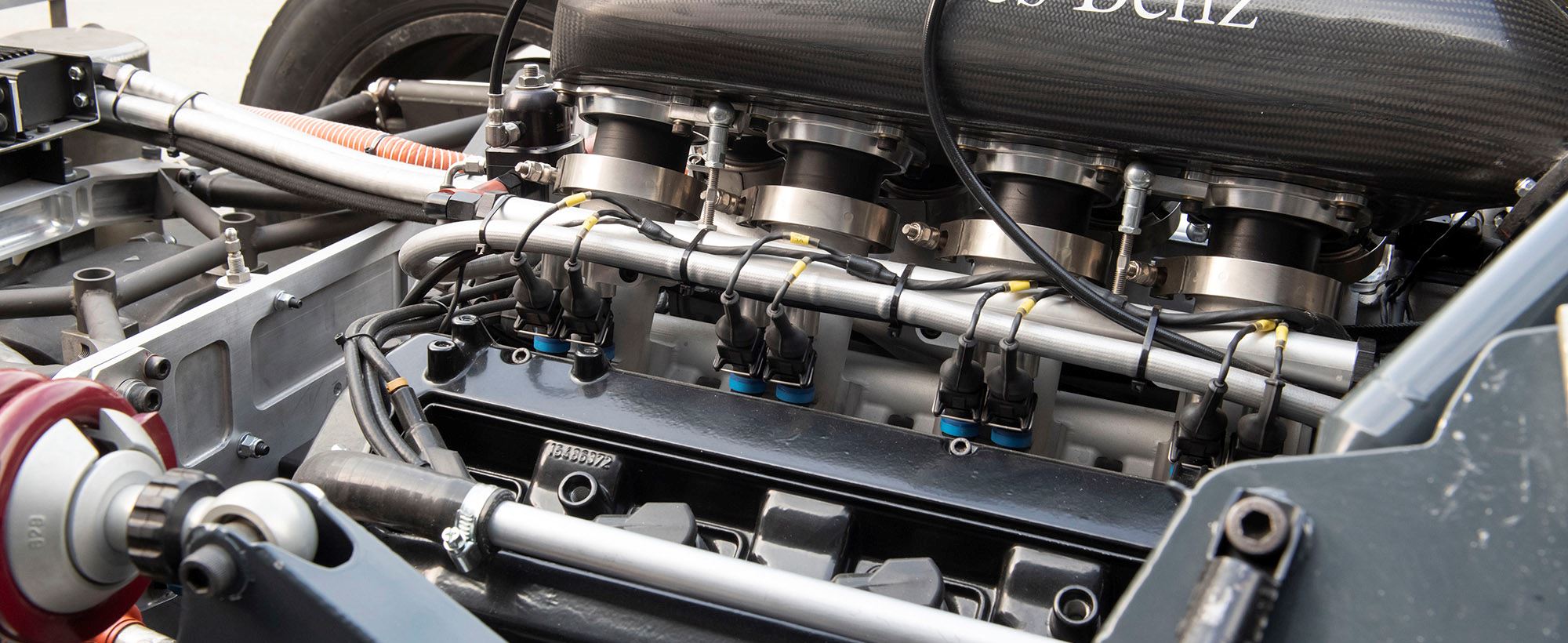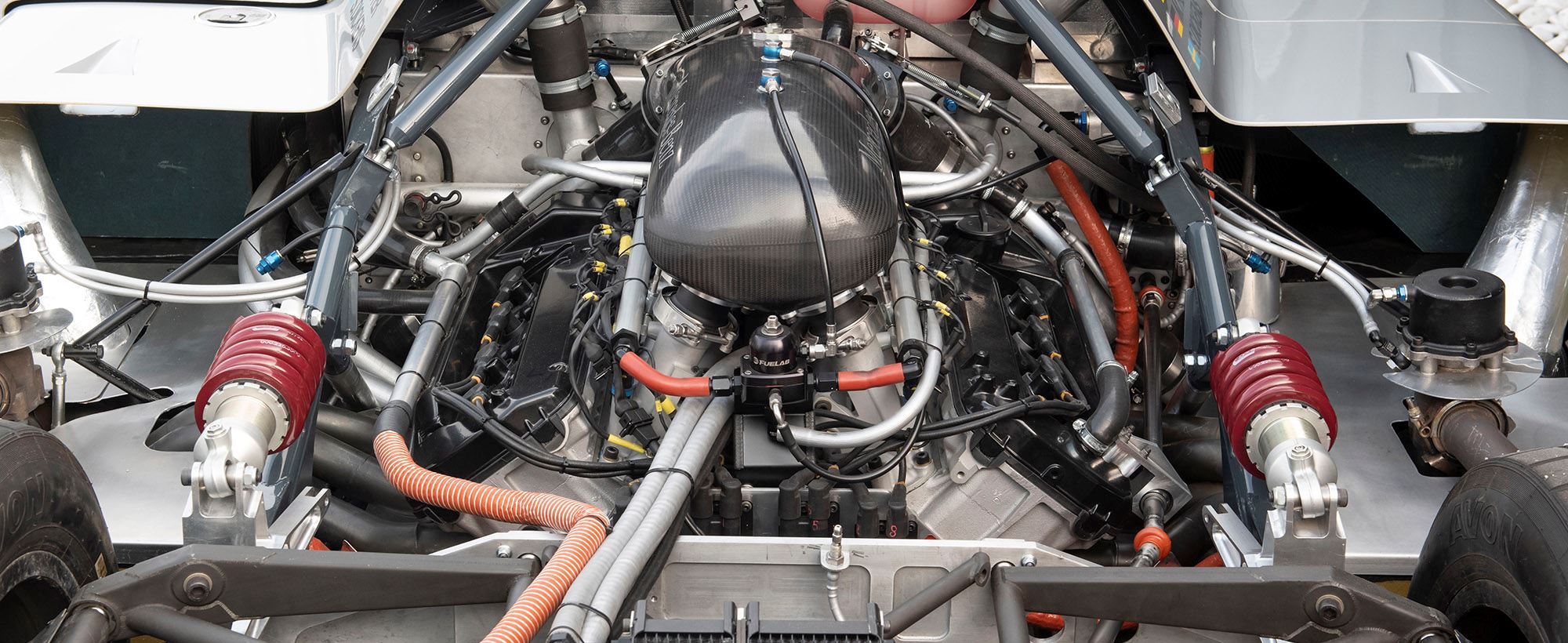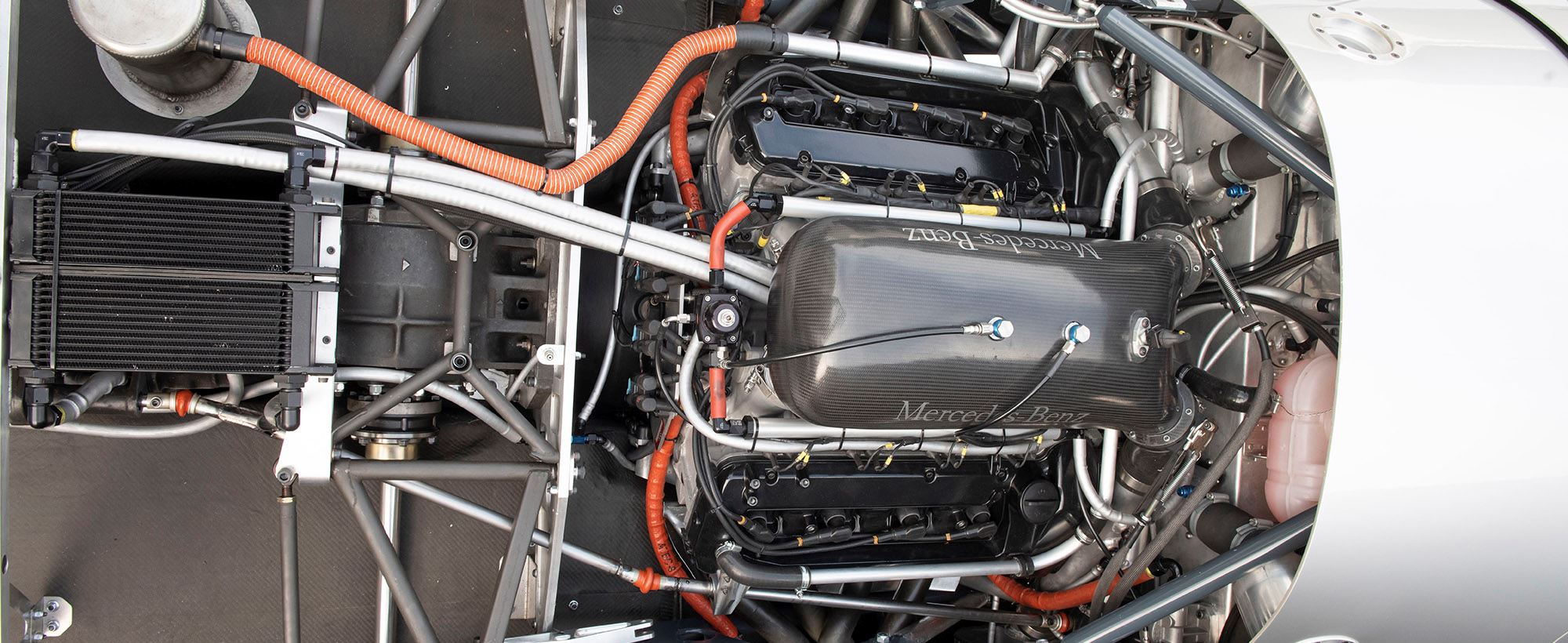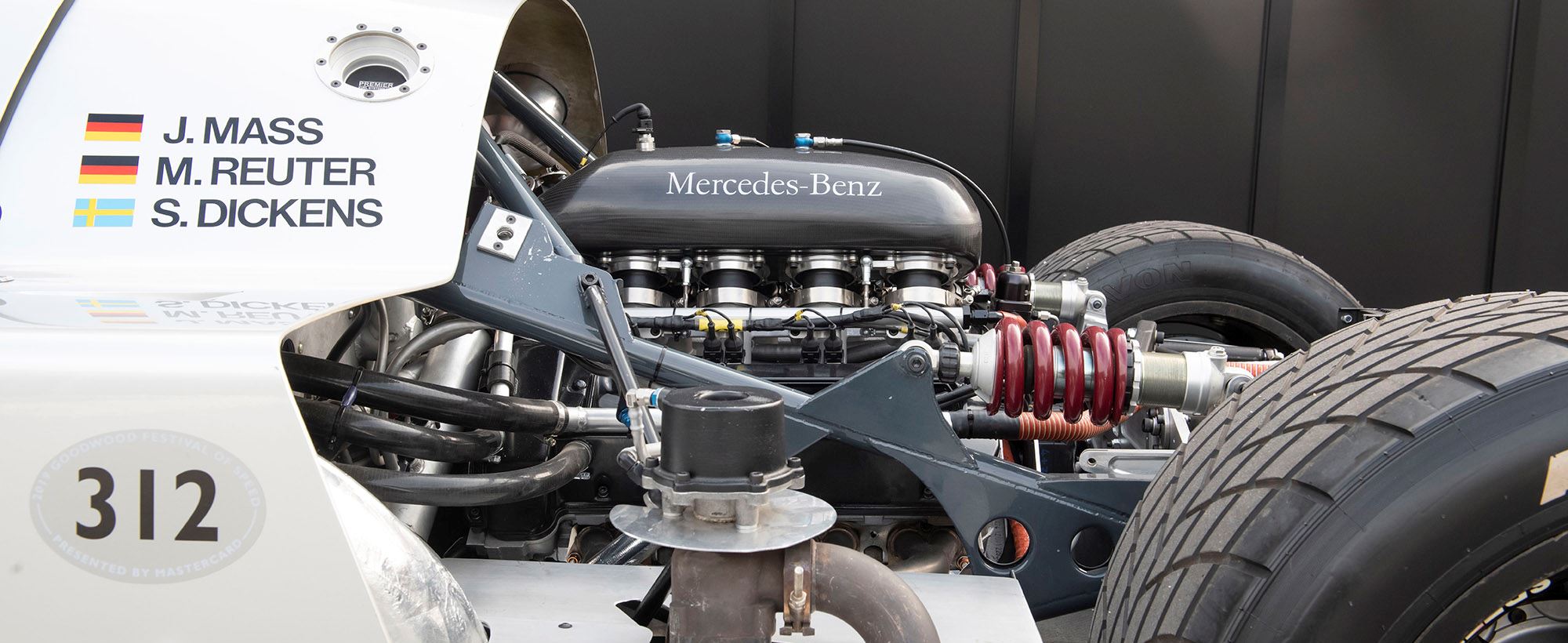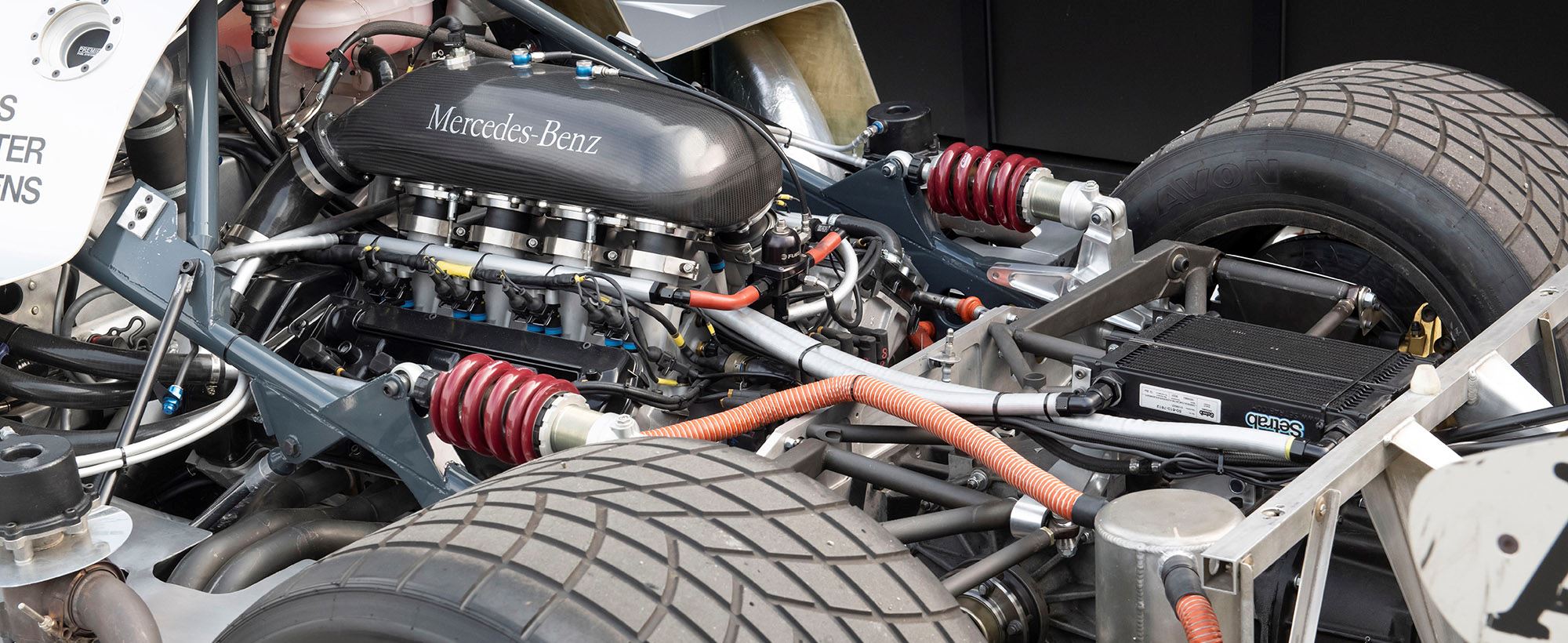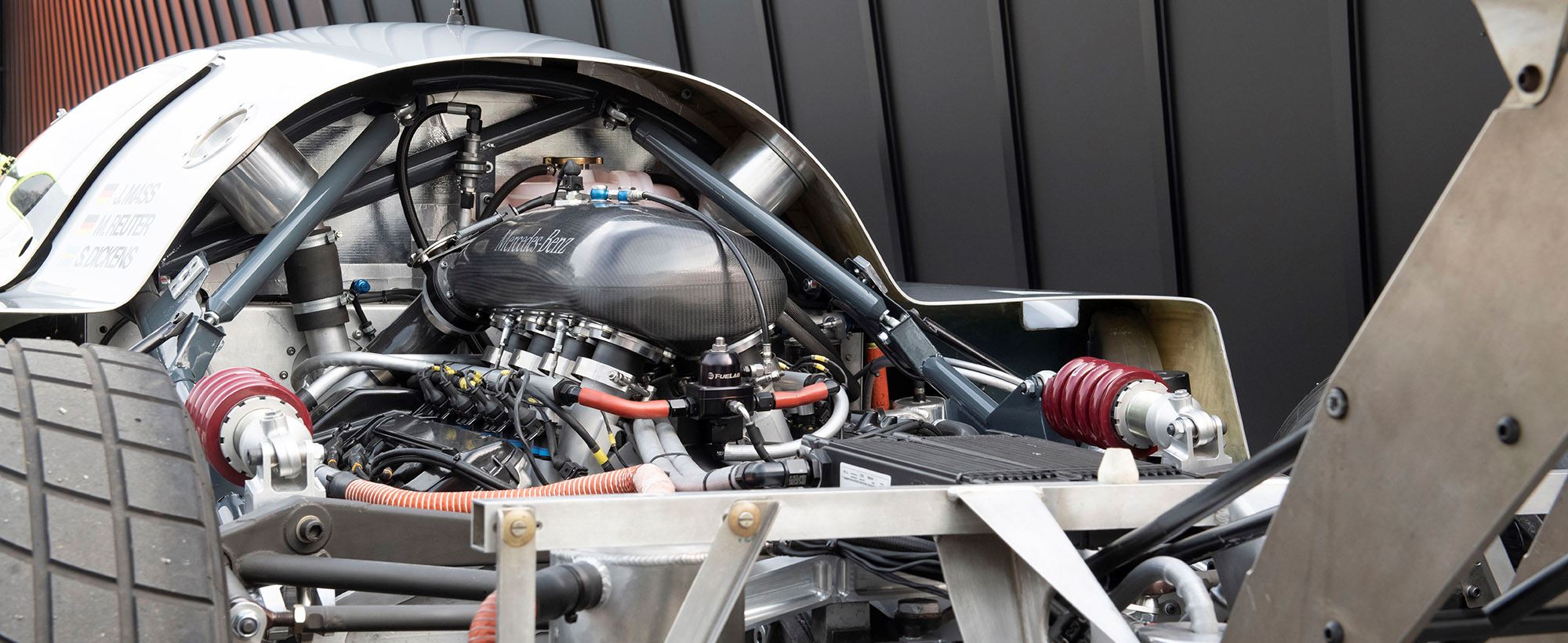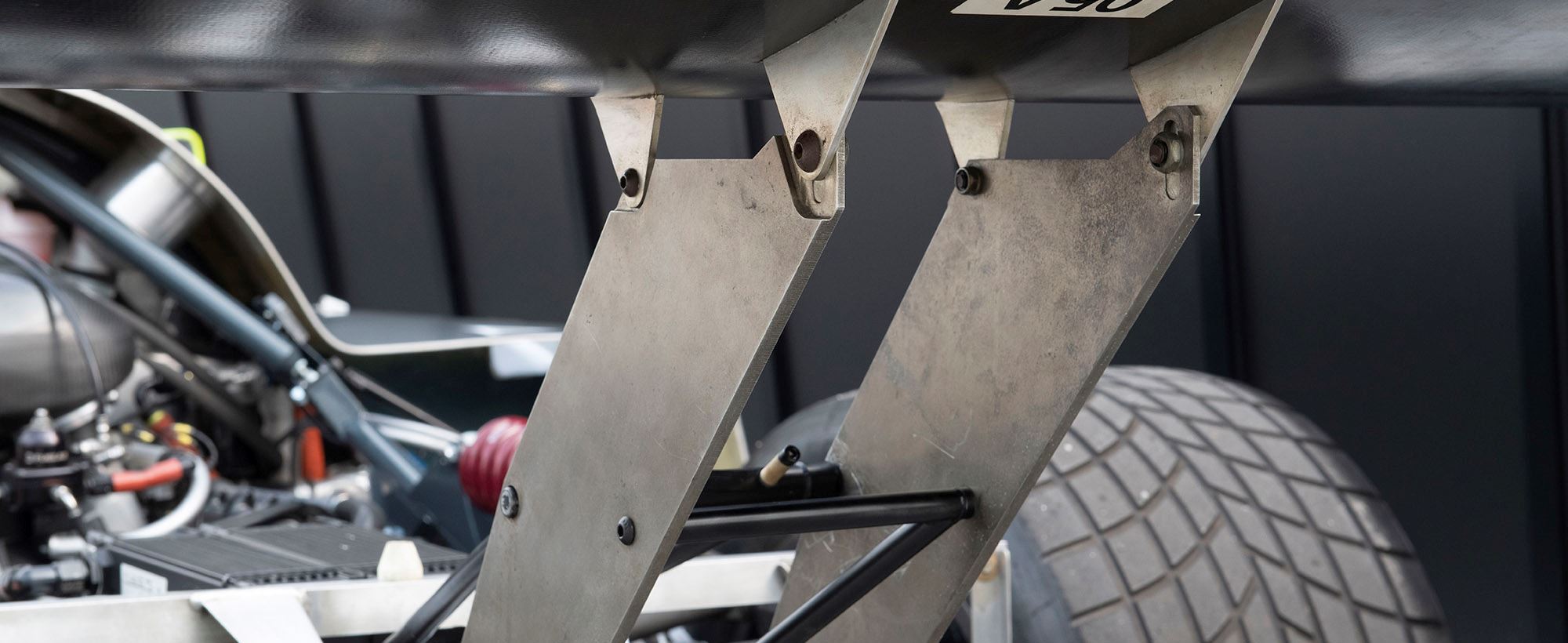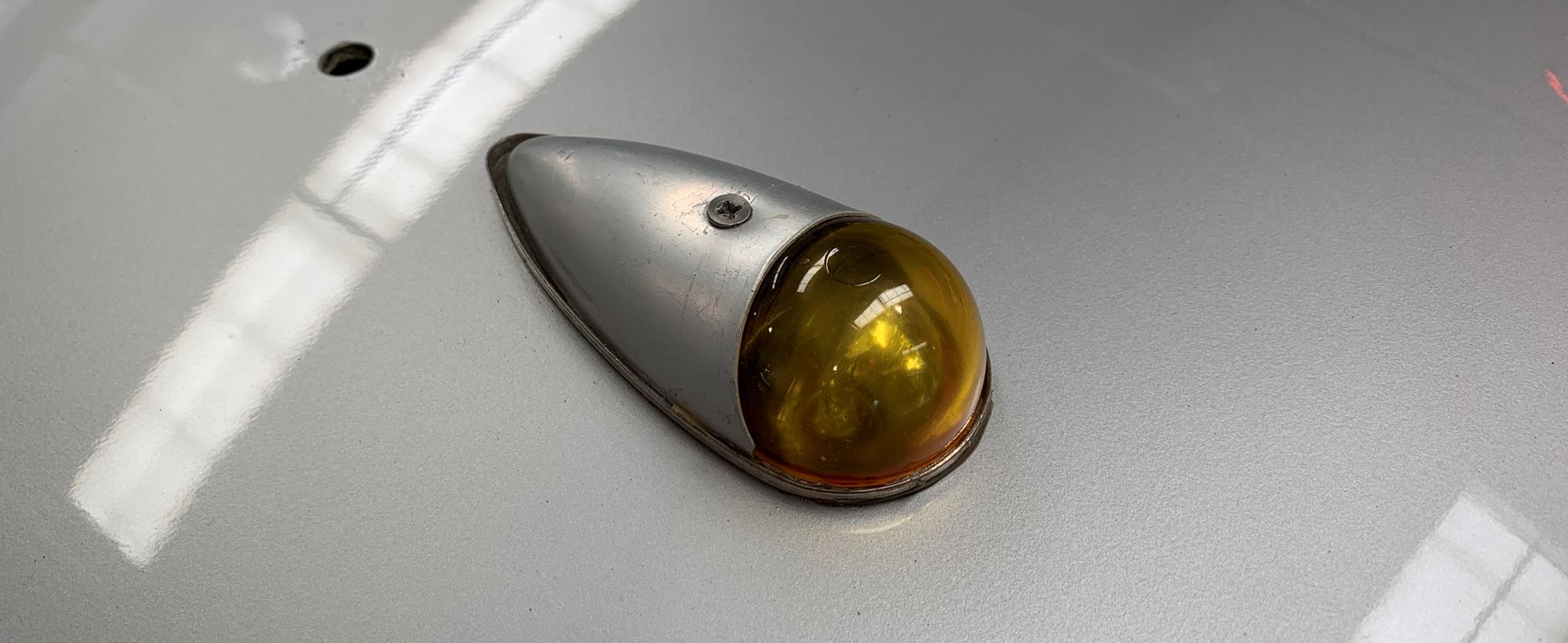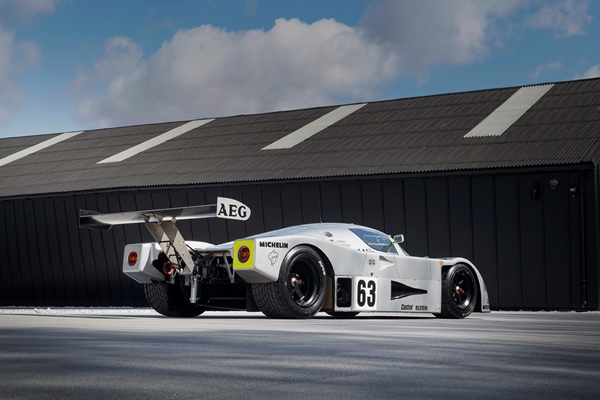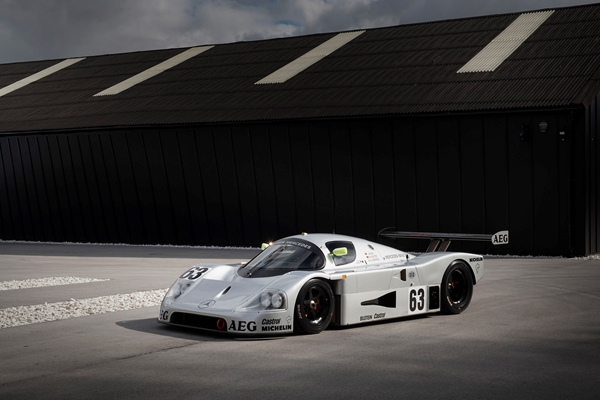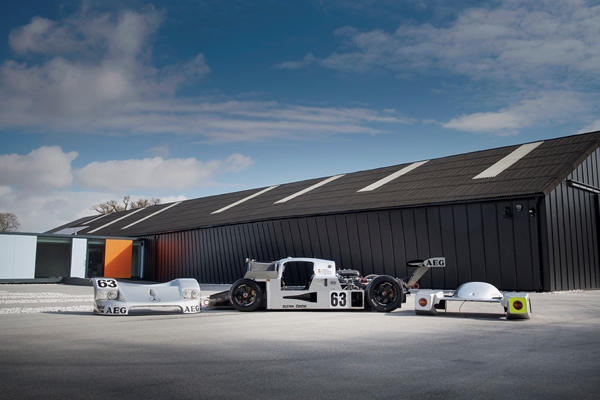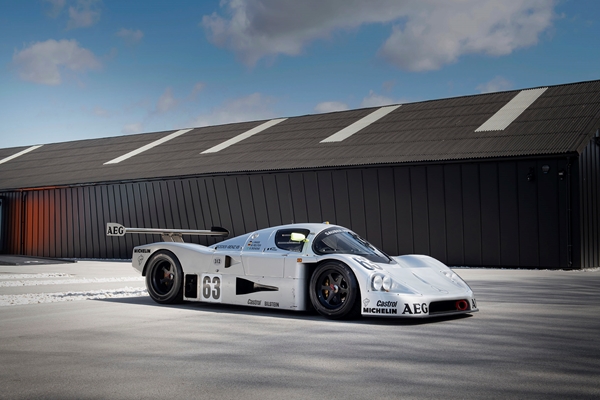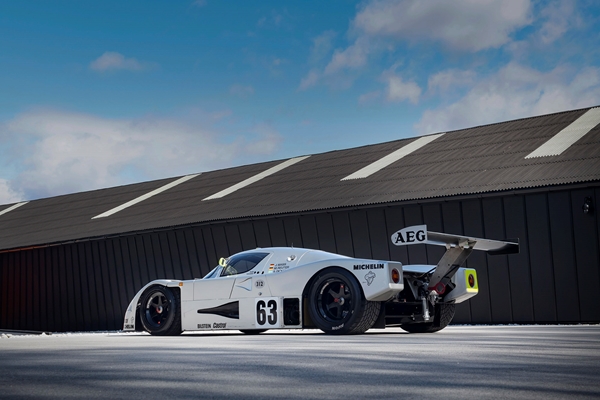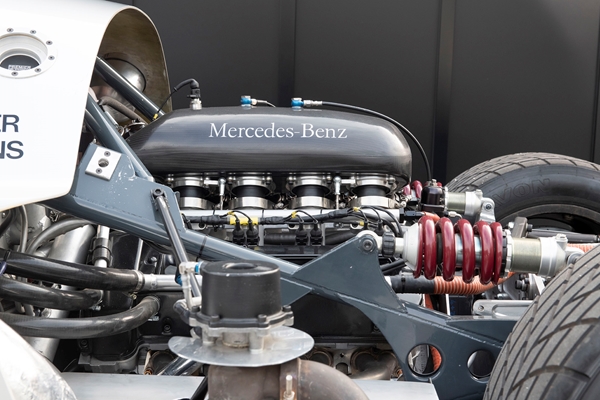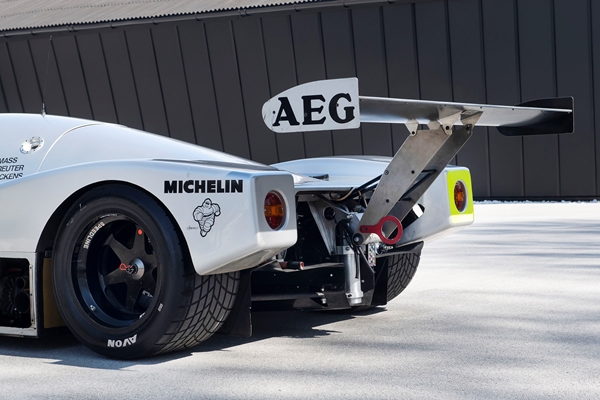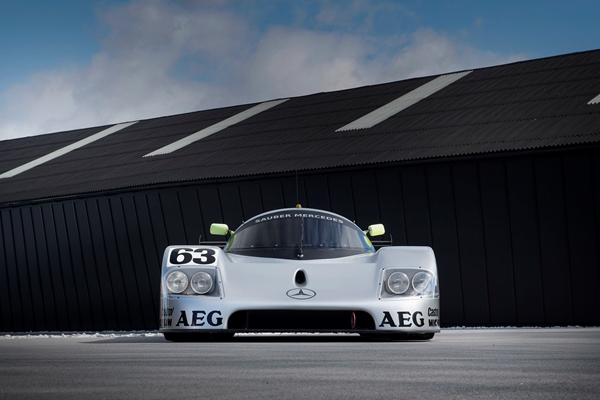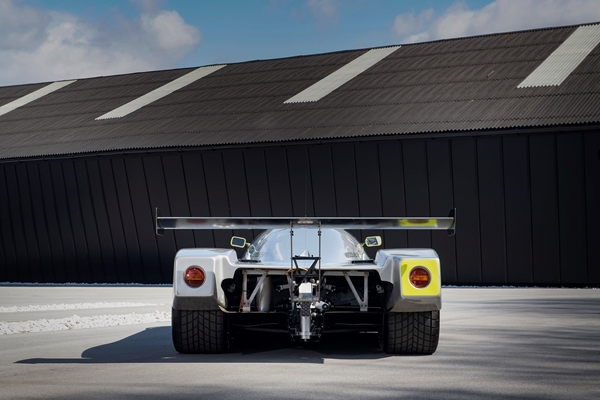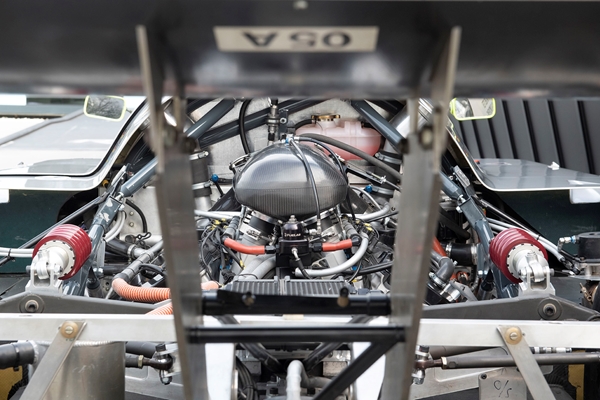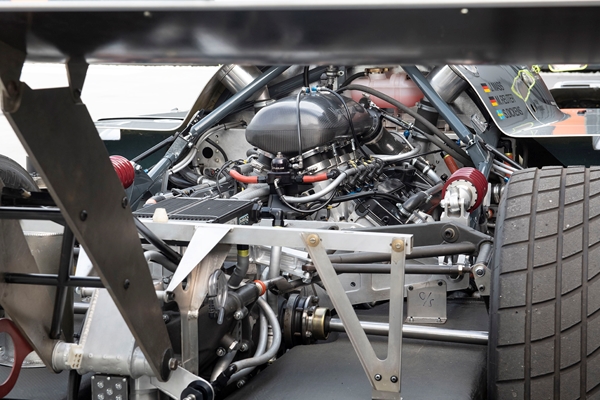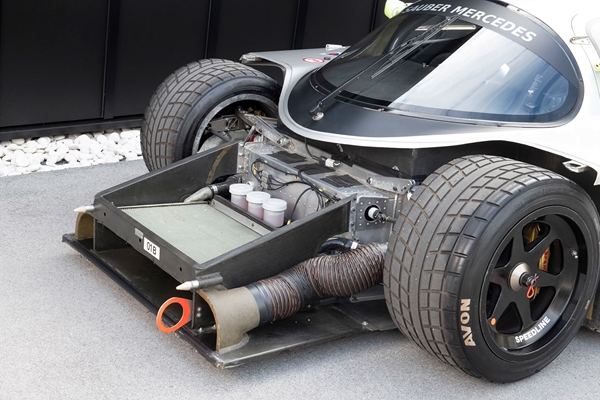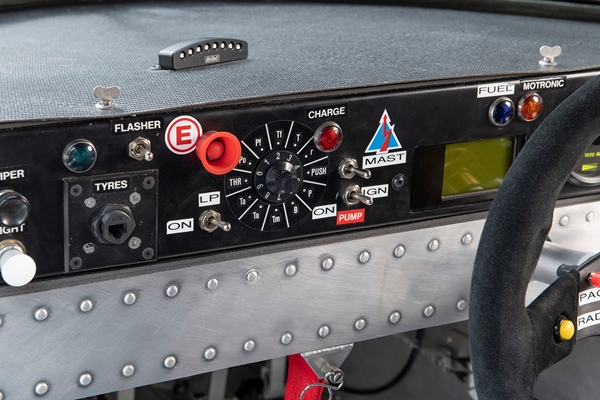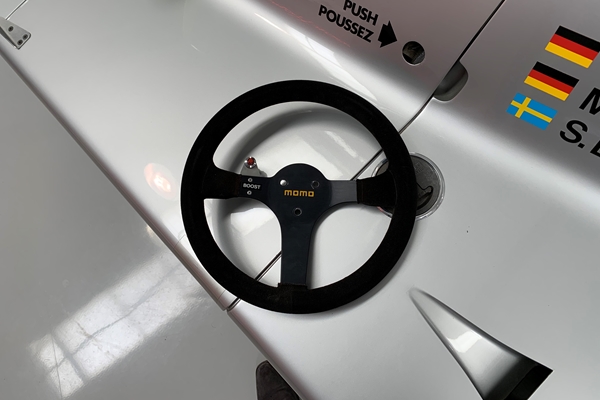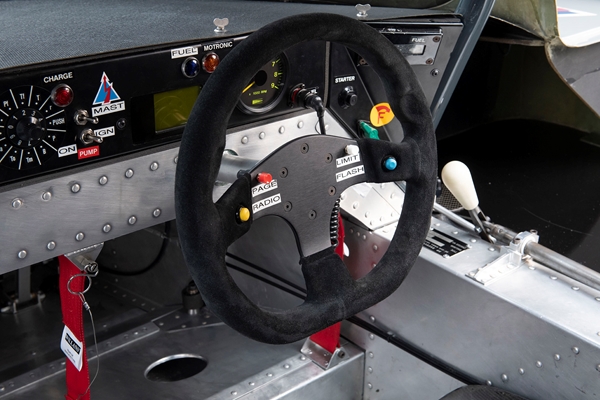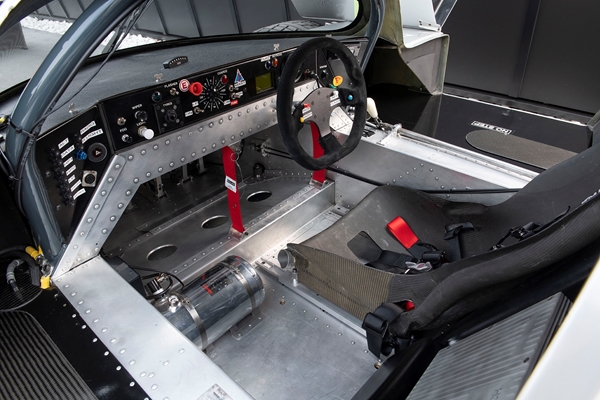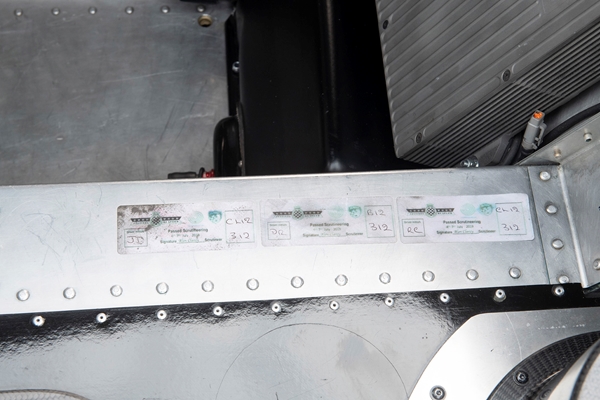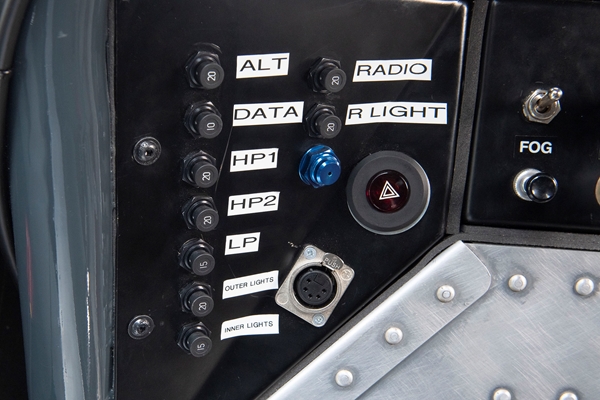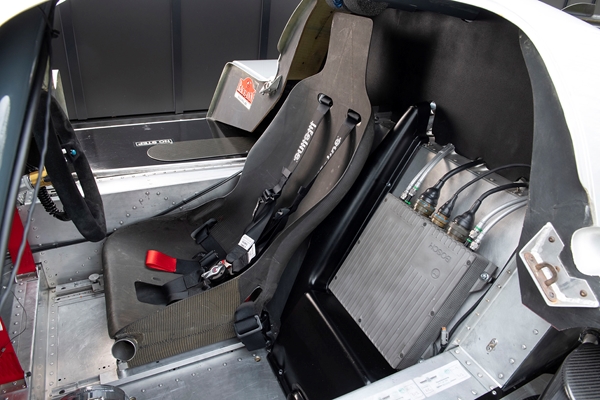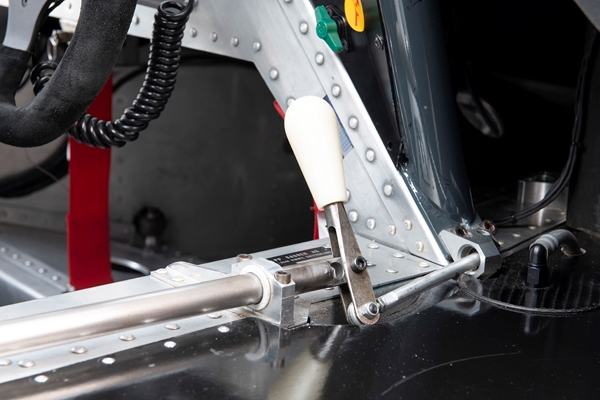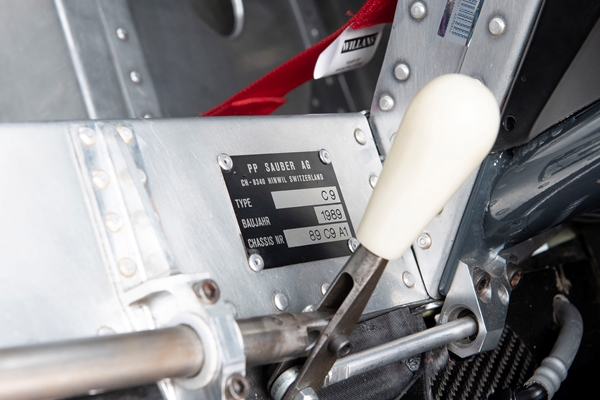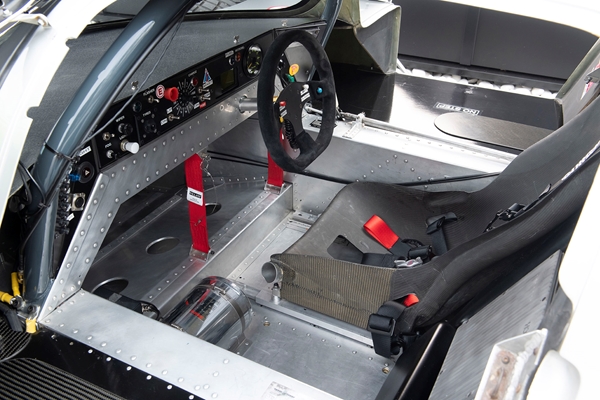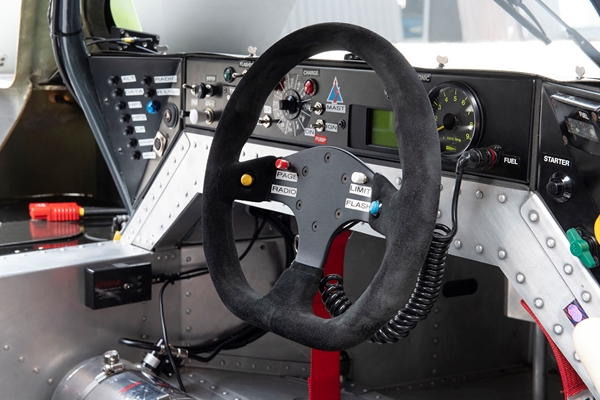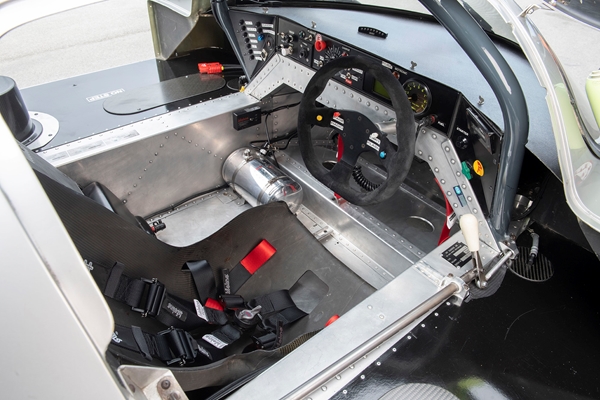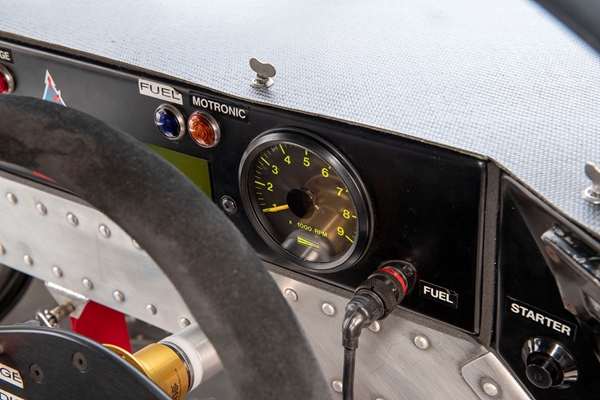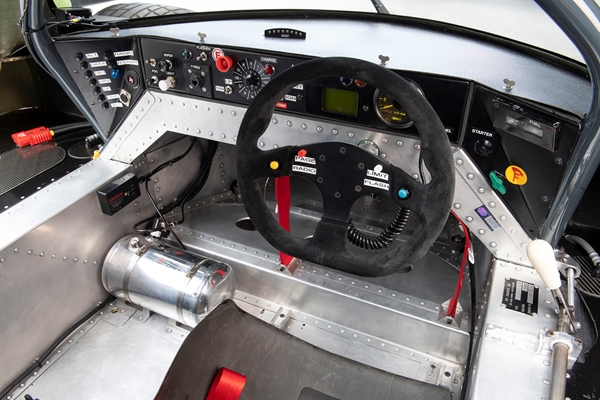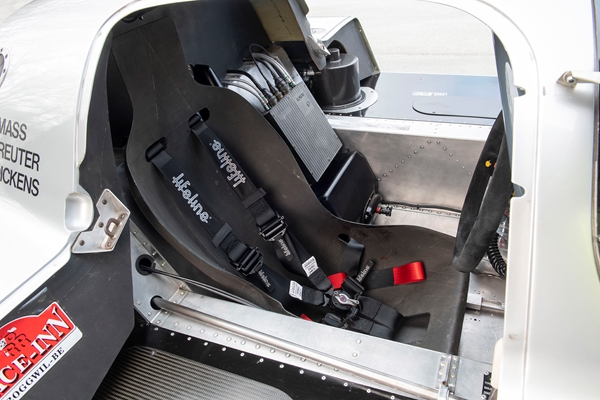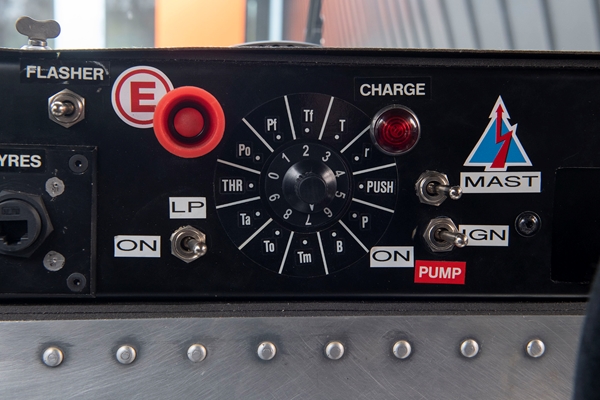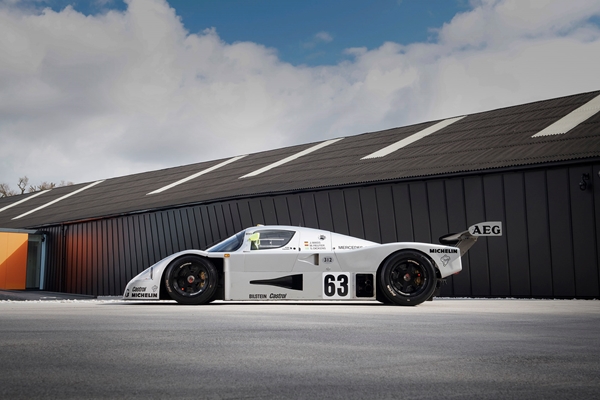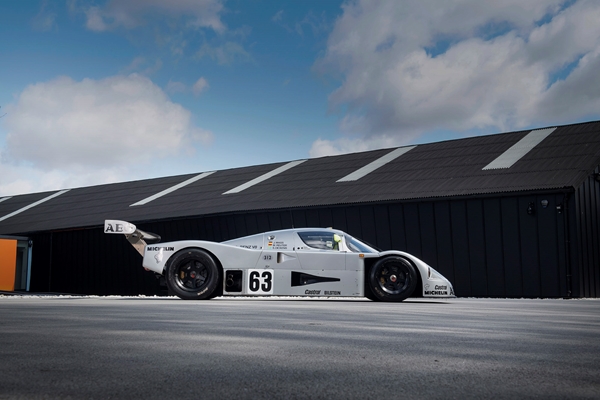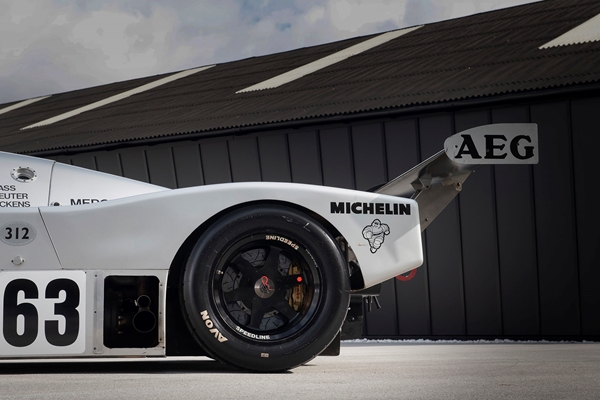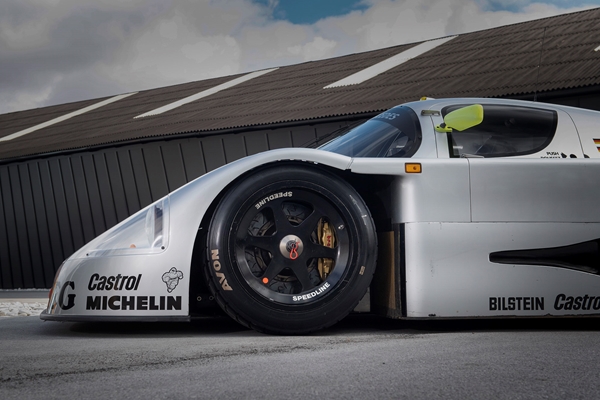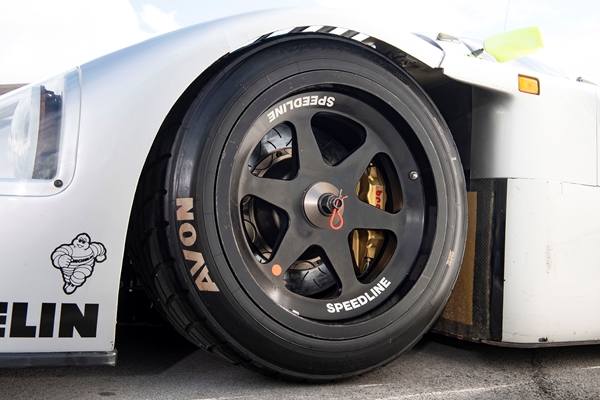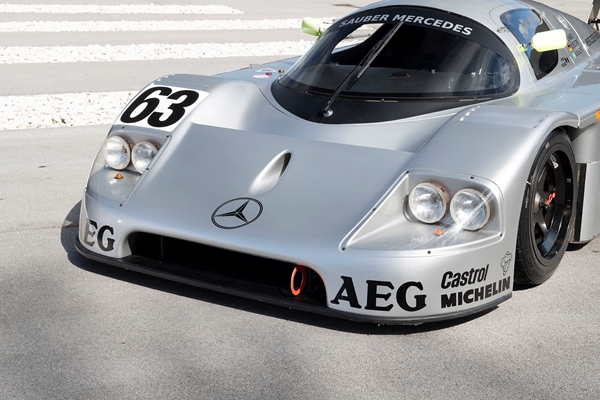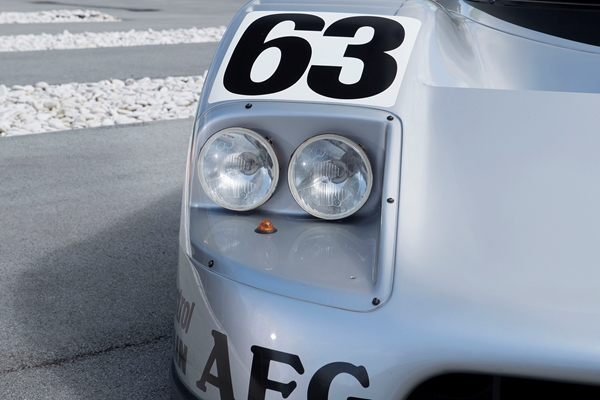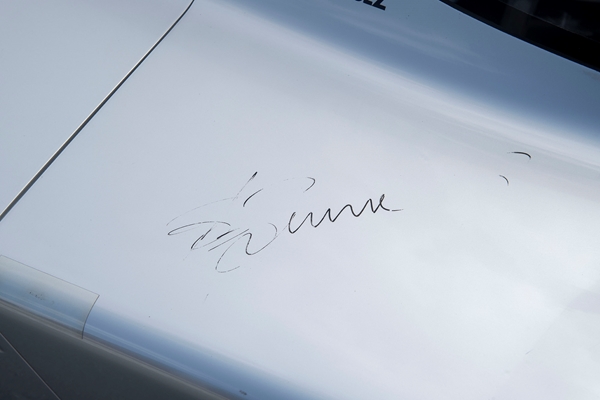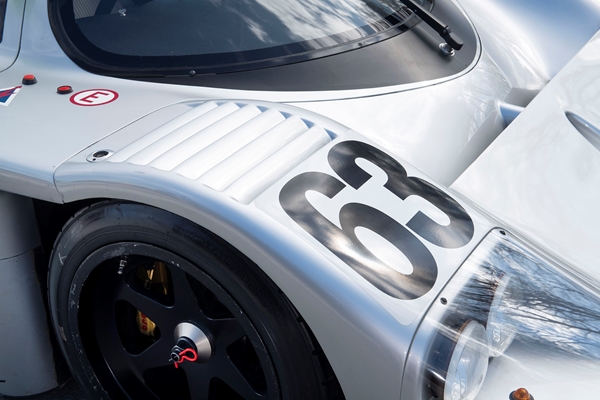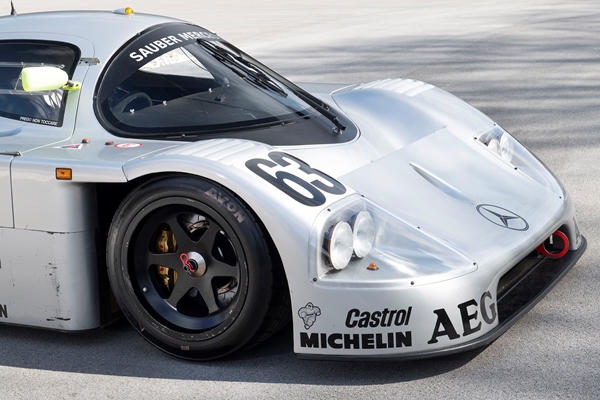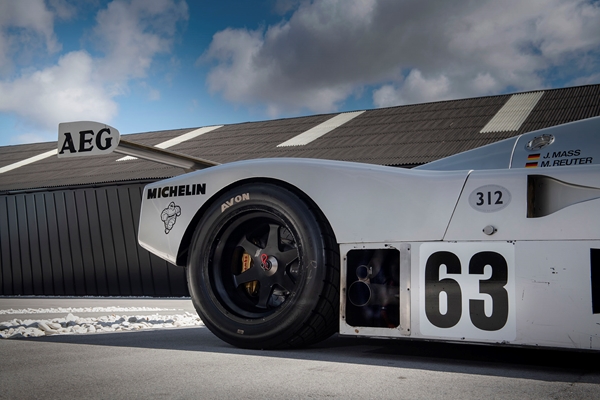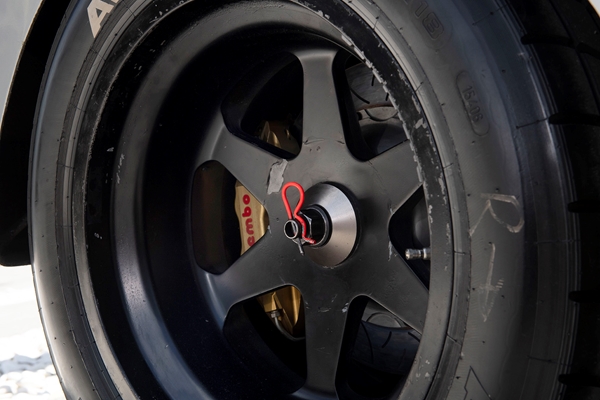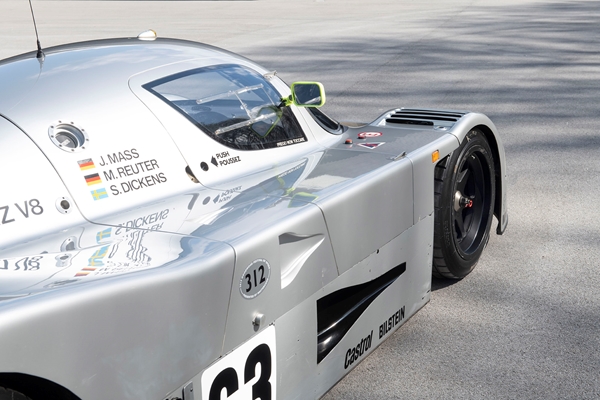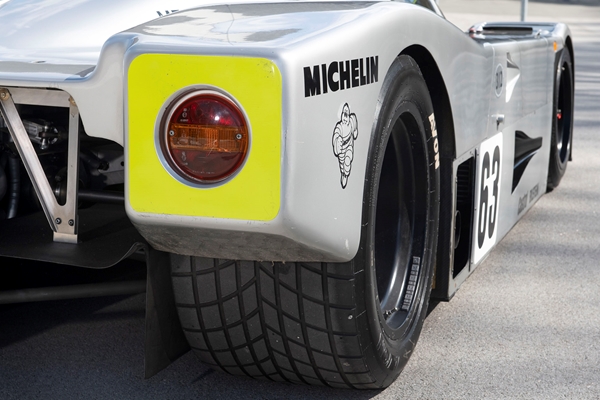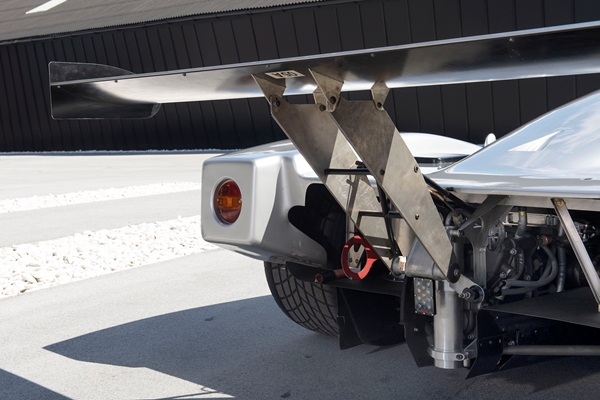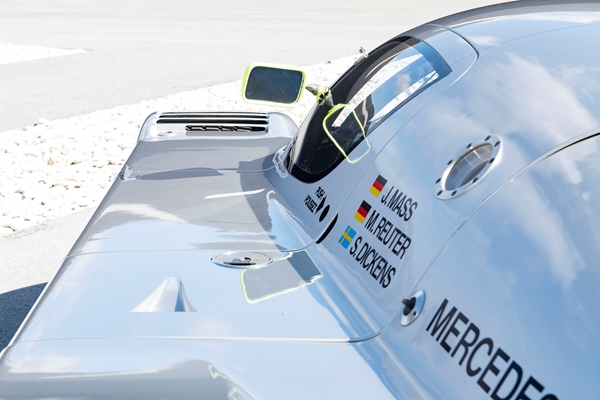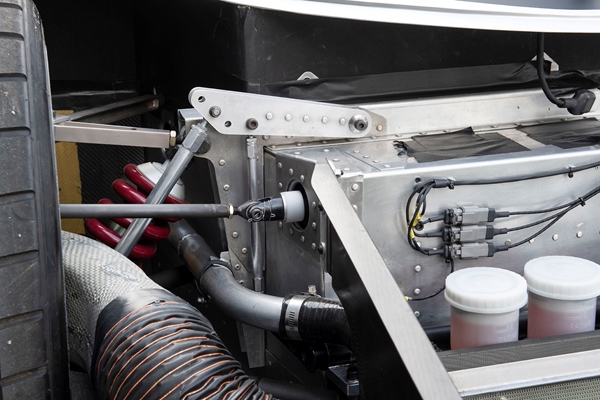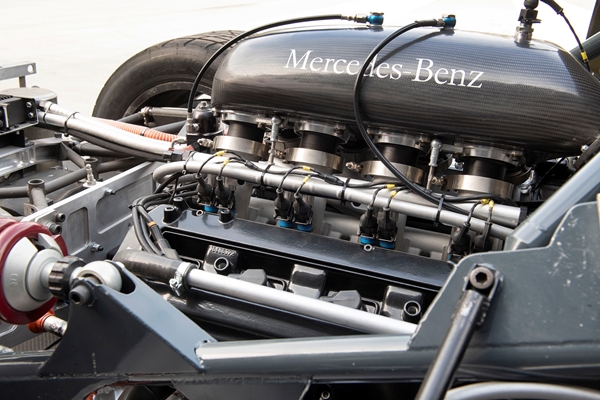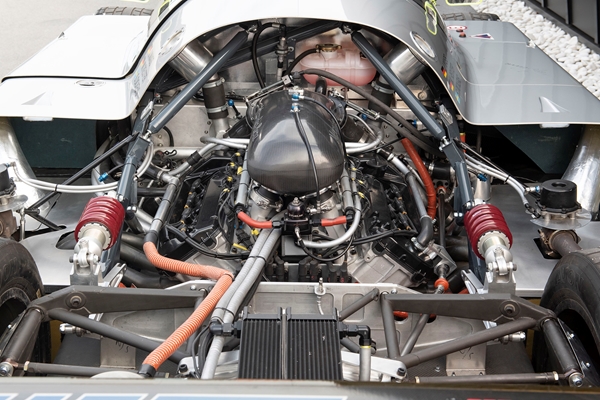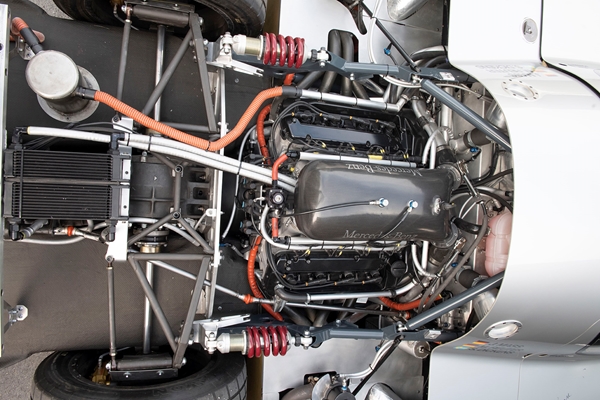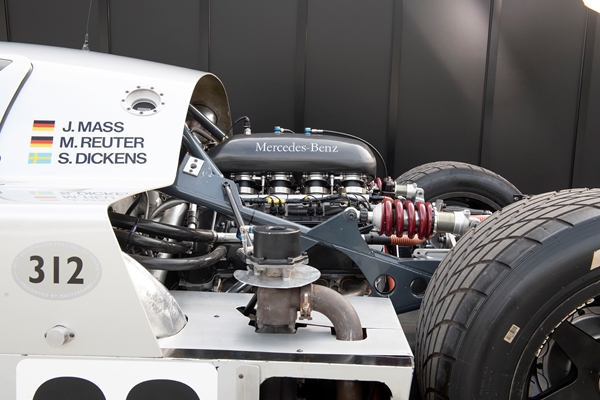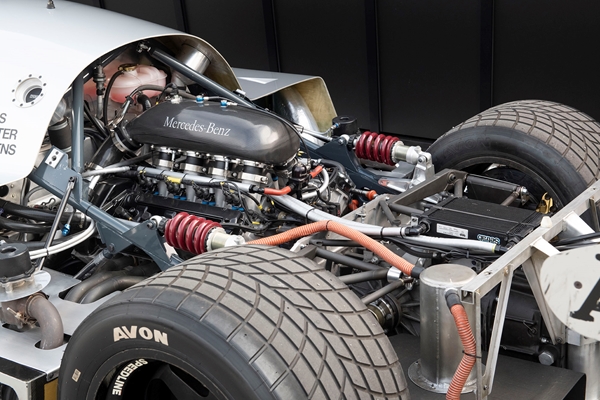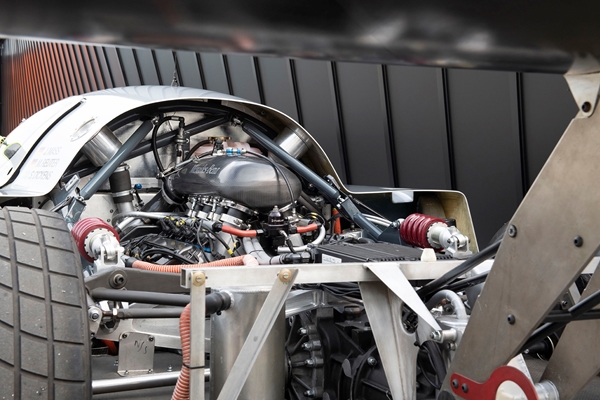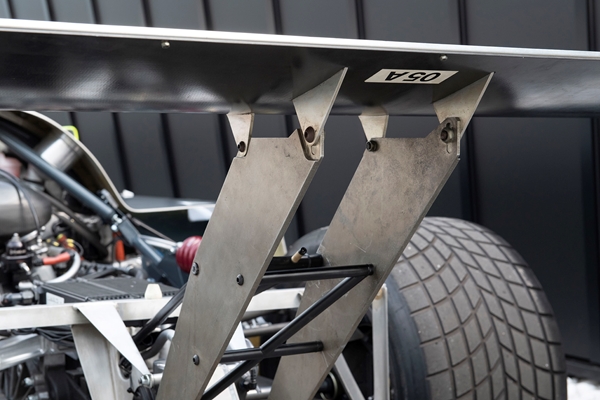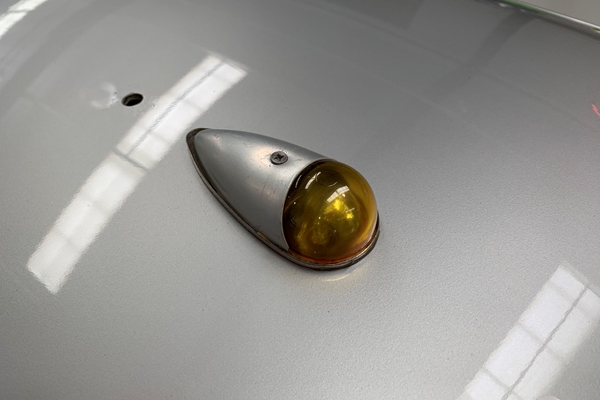1989 Sauber-Mercedes C9 - arguably the greatest Group C car in history - Freshly restored and race-ready
History of the Sauber-Mercedes C9 ‘Silver Arrow’
Following the promise of Sauber's Mercedes-Benz-powered C8 design from the 1986 season, the German car giant decided that it was the right opportunity to join the Group C ranks as a semi-works team for the 1987 World Sportscar Championship. Retaining the excellent aluminium monocoque design, although considerably stiffer and with numerous other improvements, and of course powered by the fabulous 5-litre twin-turbo Mercedes V8 engine, the C9 was born. The improvements included changing the rear suspension from vertically positioned spring-damper units arranged over the top of the gearbox to a horizontal layout mounted longitudinally to the car. Aerodynamic changes included the repositioning the oil-water radiator to the nose of the car, which allowed the use of a modified splitter plate. This also allowed the large NACA ducts to be removed from the top of the door sills, further improving the aerodynamic efficiency of the car. The rear deck had been considerably re-profiled, and the rear wing was now mounted on a single central support. The Heini Mader-tuned engines of the C8 were soon in-house for further development. It was progressively lightened with the use of a new crankshaft, higher efficiency KKK turbochargers and a liner-less block. It was a semi-stressed part of the chassis and ran a dry sump. Easily producing 750-800bhp on higher boost, the low stress five-litre V8 engines only revved to 7000rpm, making them both efficient and reliable. They were also equipped with huge, flat, torque curves.
For its debut season in 1987, the C9s were run by Kouros Racing, overseen by the Mercedes factory. The team were a disappointing twelfth in the teams standings, scoring points in only a single round – but they were fast, very fast – Johnny Dumfries set a new lap record at Le Mans, Mike Thackwell took pole position at Spa, and Jean-Louis Schlesser won the final race of the year – the Nürburgring Supercup.
For 1988, the team would become the official Sauber-Mercedes factory team, with sponsorship from the Mercedes-owned AEG-Olympia. This was the year that the world took serious notice of the Mercedes team, finishing the season with five race wins and beaten only by the mighty Silk Cut Jaguar XJR-9. Unfortunately, at Le Mans, the team suffered an unfortunate setback when they were forced to withdraw due to concern over their Michelin tyres after Klaus Niedzwiedz suffered a blow out at high speed, allowing Jaguar’s first Le Mans win since 1957.
Finally, in 1989, the car was able to achieve the great success that it so deserved – in fact it would prove to be world domination. The cars were row resplendent in the Silver Arrow livery and with upgraded four-valve M119 engines, they were now the fastest Group C machines in the world. In qualifying for the 1989 Le Mans 24 Hours, the Baldi/Acheson/Brancatelli C9 recorded a mighty speed of 400 km/h (248 mph) on the Mulsanne Straight. The Sauber-Mercedes C9s would go on to finish first, second and fifth in the race. Mercedes driver Jean-Louis Schlesser would also take the Driver's World Championship that season - the C9 winning every race of the season apart from Dijon Prenois. 1990 would see the introduction of the C11 and retirement for the first Silver Arrow of the modern era, but the C9 had done enough to go down in the history books as one of the greatest racing sports racing cars in history.
History of chassis 89-C9-A1
CHASSIS 89-C9-A1 was built by the works Sauber-Mercedes Team for the 1989 World Sports Car Championship season – the season that the team would go onto win the Driver’s and Team’s World Championships, as well as the jewel in the crown – the Le Mans 24 Hours. Despite having this brand-new chassis, the team continued into the ’89 season with their proven ’88 chassis. With no cars severely damaged during the ’89 season, 89-C9-A1 was never required for action and reached the end of the season un-raced. Having gone back to the Sauber factory after the season, the car was subsequently displayed in the amazing Donington Museum in the UK, where it remained, untouched, for many years.
Fast-forward to 2017, when the current owner, a well-known Group C racer and collector, acquired the car. Still totally complete, aside from some rear suspension parts (see pictures of the car as-found in the Donington Museum), the car still wore its beautiful, battle-scarred, bodywork (believed to be that of the 1989 Le Mans winning #63 car, clearly swapped for this car’s new bodywork post-Le Mans). It was soon decided that the car would undergo a bare-tub rebuilt with absolutely no expense spared. This job was entrusted to the hugely experienced team at BBM Sport in the UK, who have more experience with Sauber-Mercedes C9 and C11 models than any other company. The thundering turbocharged V8 was totally rebuilt by Paul Knapton’s X-tec Engineering team with all-new internals – the same full rebuild and new internals for the gearbox. The engine currently produces between 700 and 900bhp depending on the boost levels.
Since completion the car was invited to be part of Mercedes-Benz’s 125th anniversary celebrations at the 2019 Goodwood Festival of Speed as well as being driven by original Mercedes works driver Kenny Acheson for a Motor Sport Magazine article. Today the car is race-ready with new HTP, current crack-test, new fuel tank and freshly rebuilt from the front to back.
Please click this link to read the Motorsport Magazine article:
https://www.dhrofgo.com/media/8691/sauber-mercedes-motorsport-magazine-article-dhr.pdf
A unique opportunity to acquire a factory Mercedes Group C car with Le Mans and World Championship-winning pedigree.
POA ENQUIRE ABOUT THIS VEHICLE
